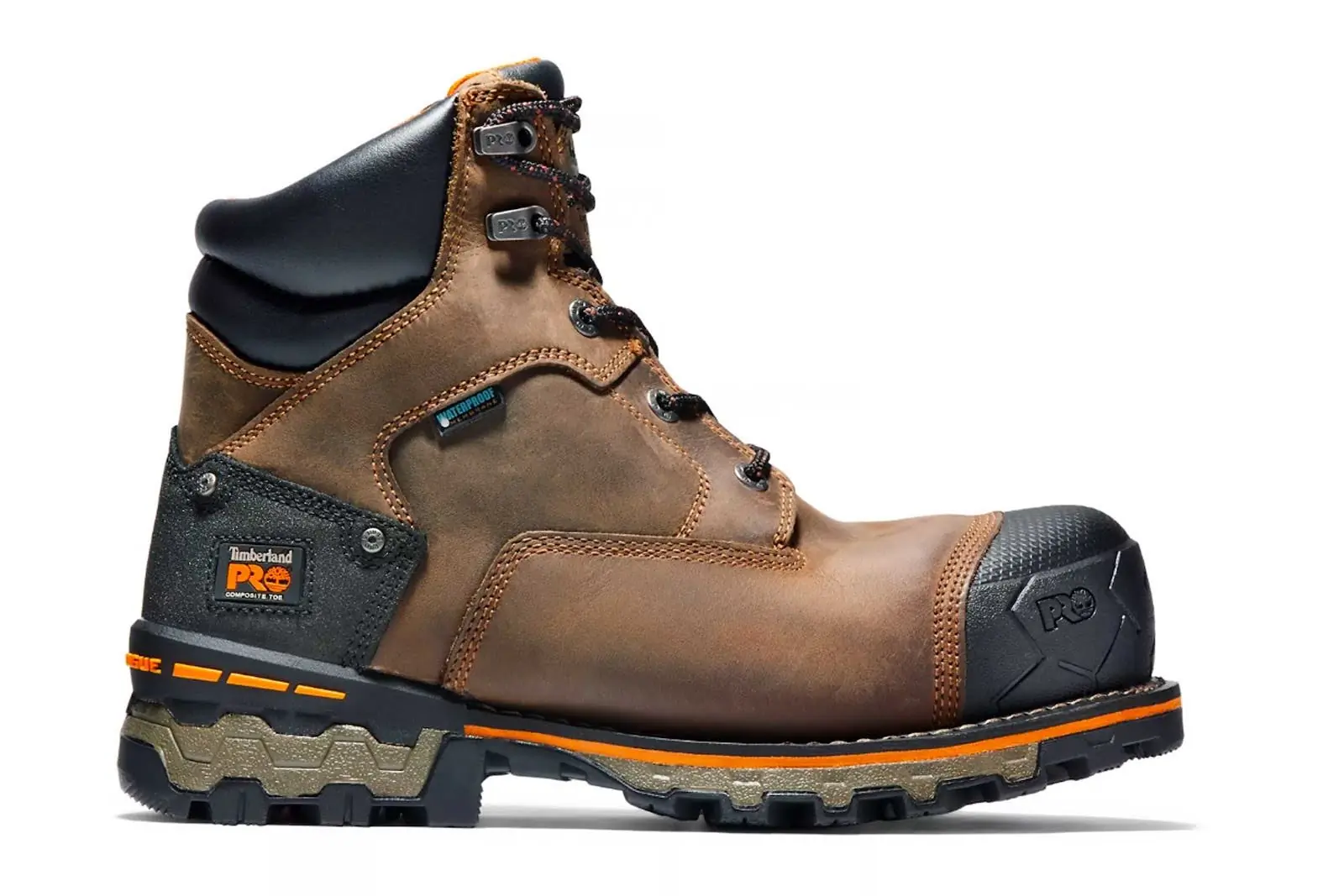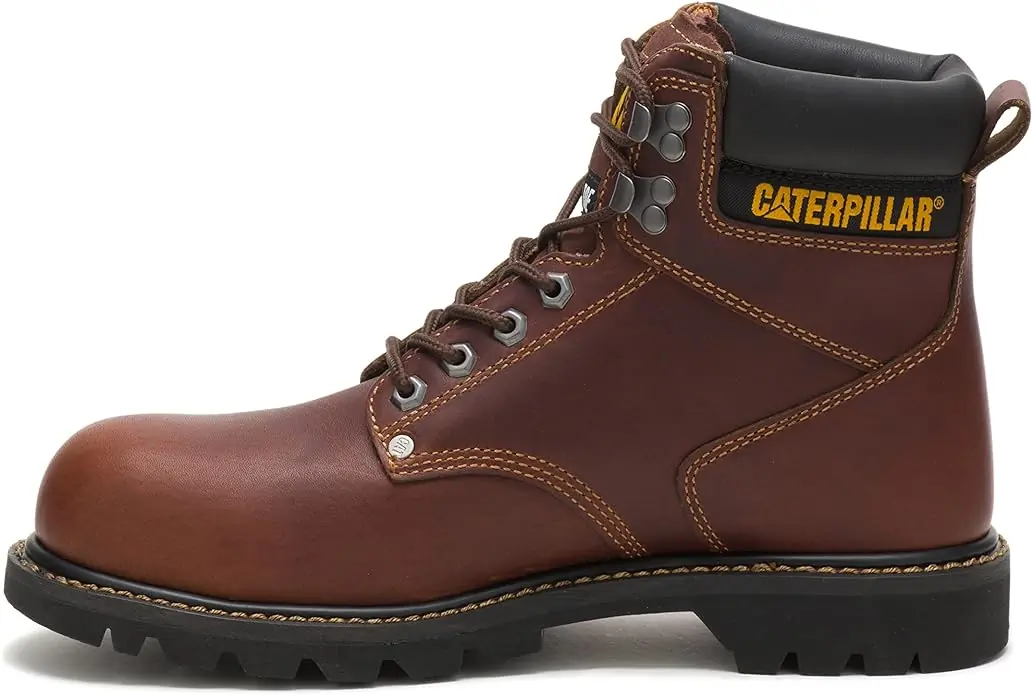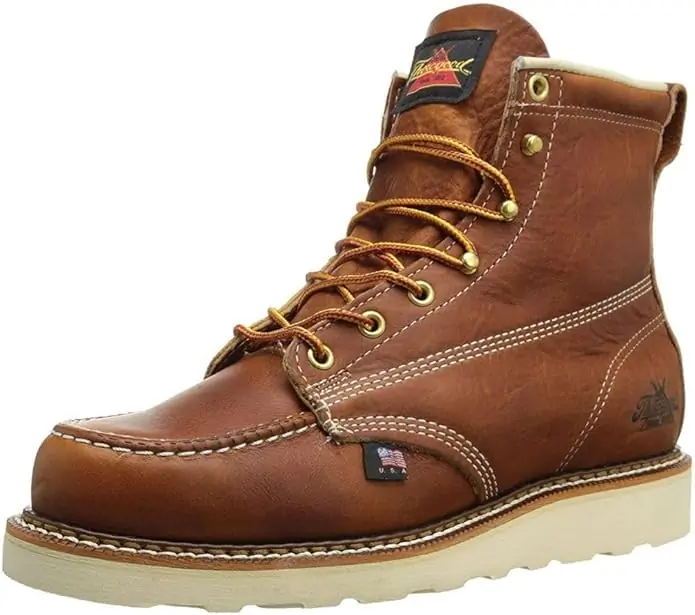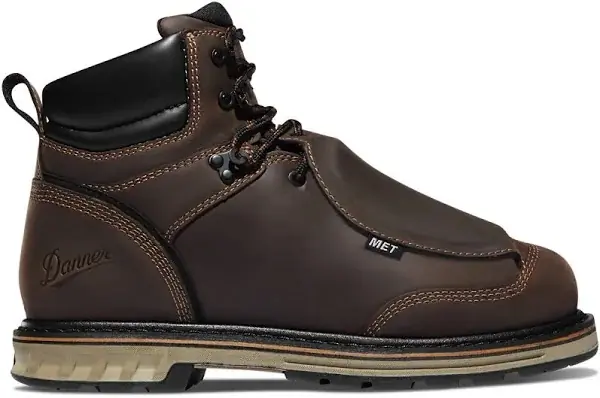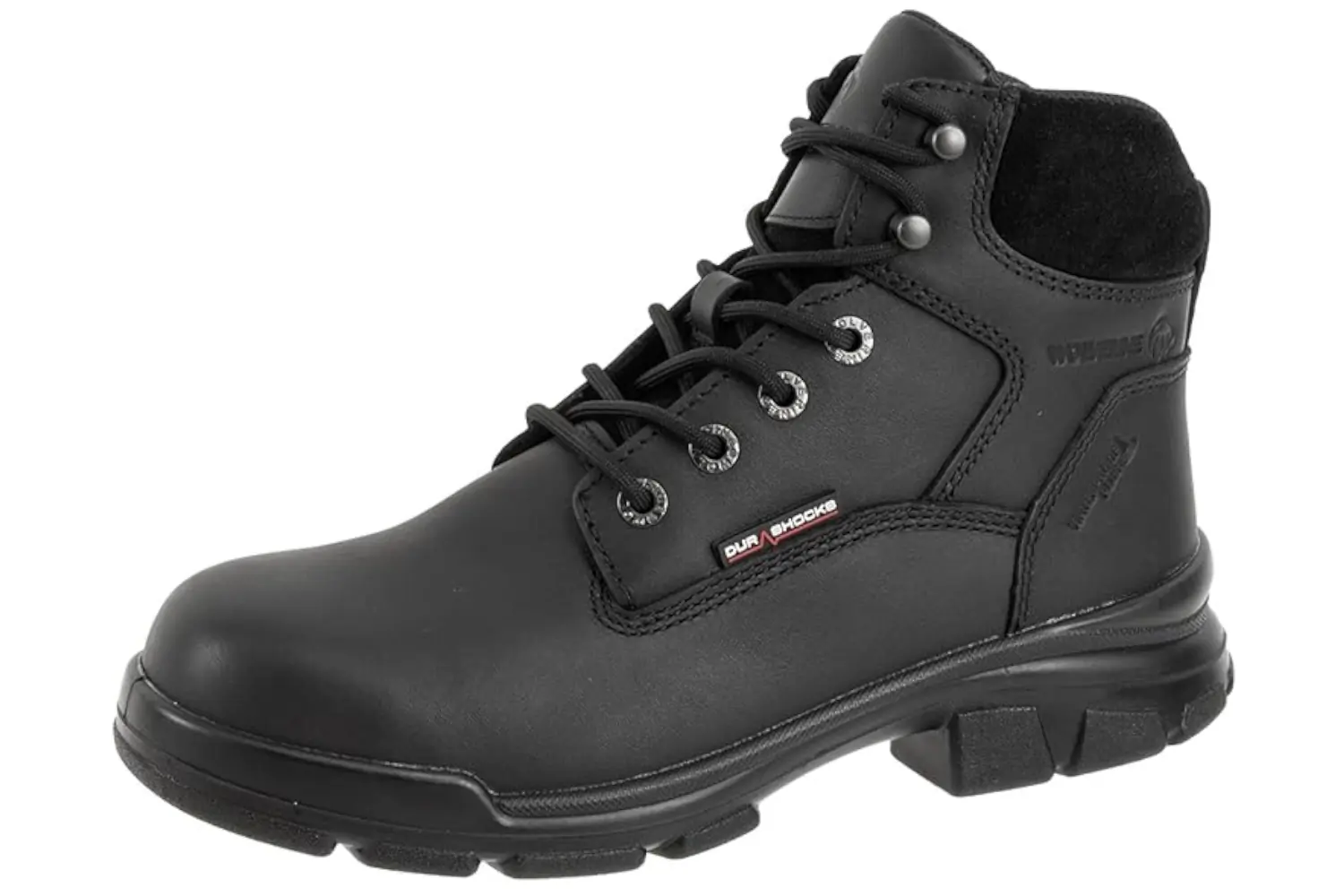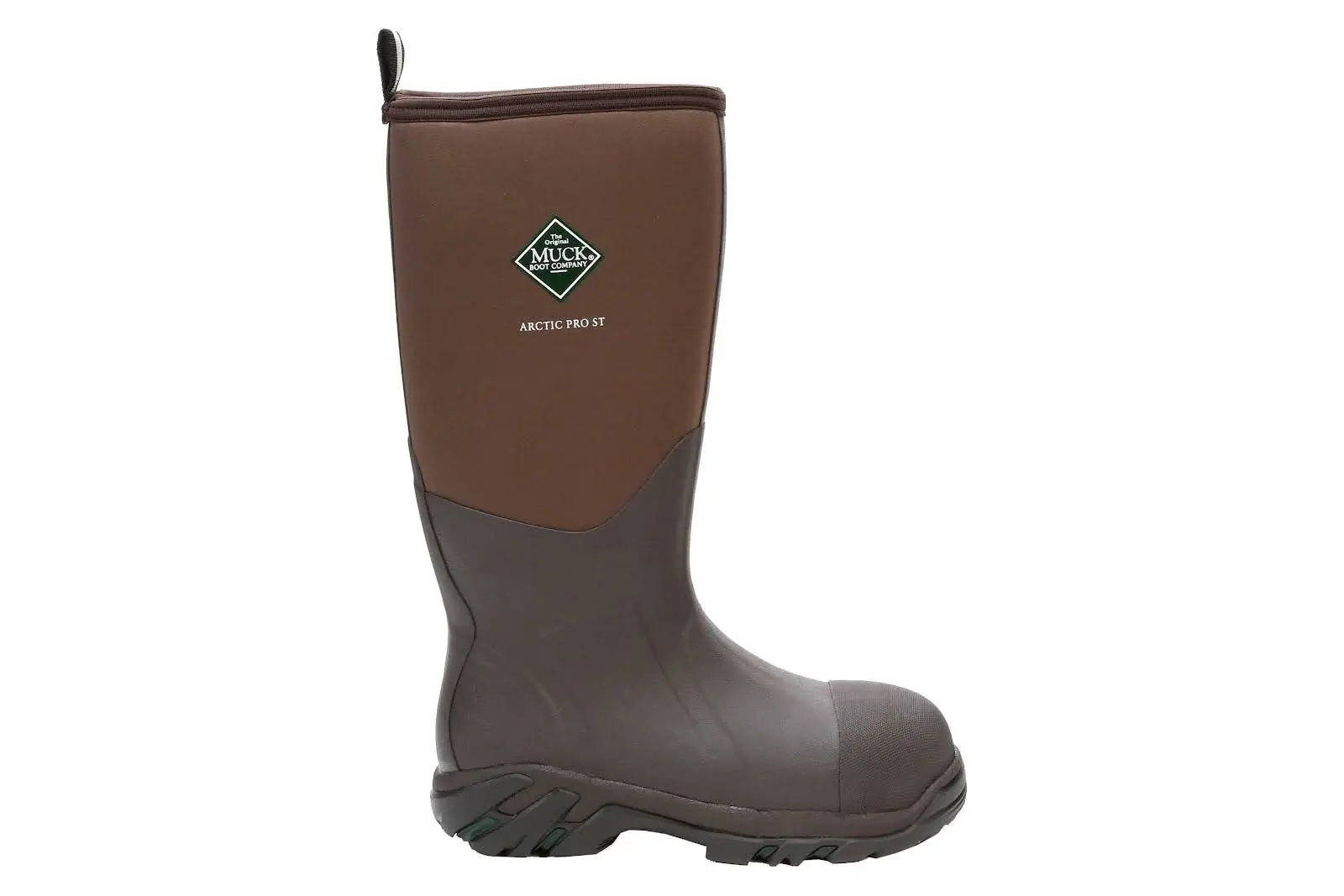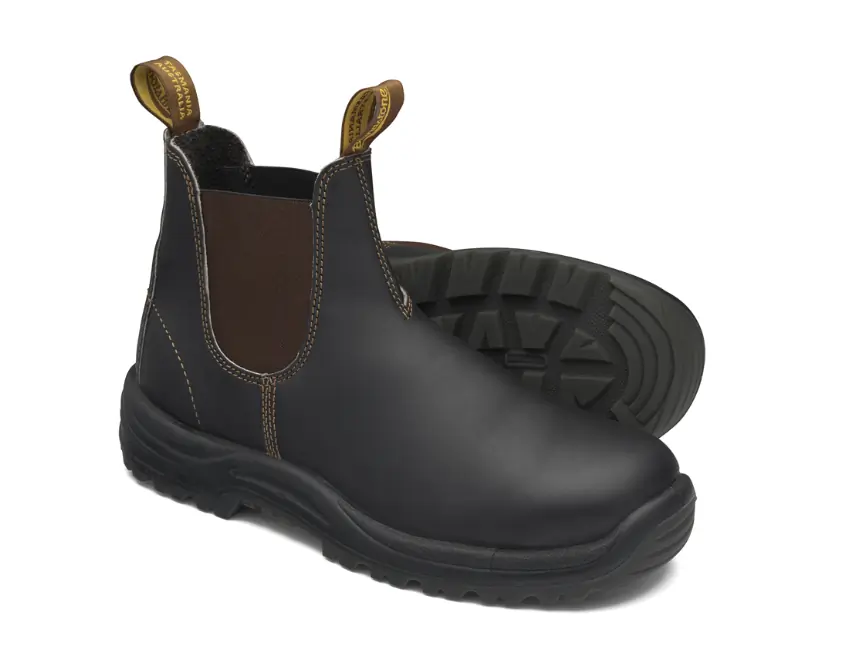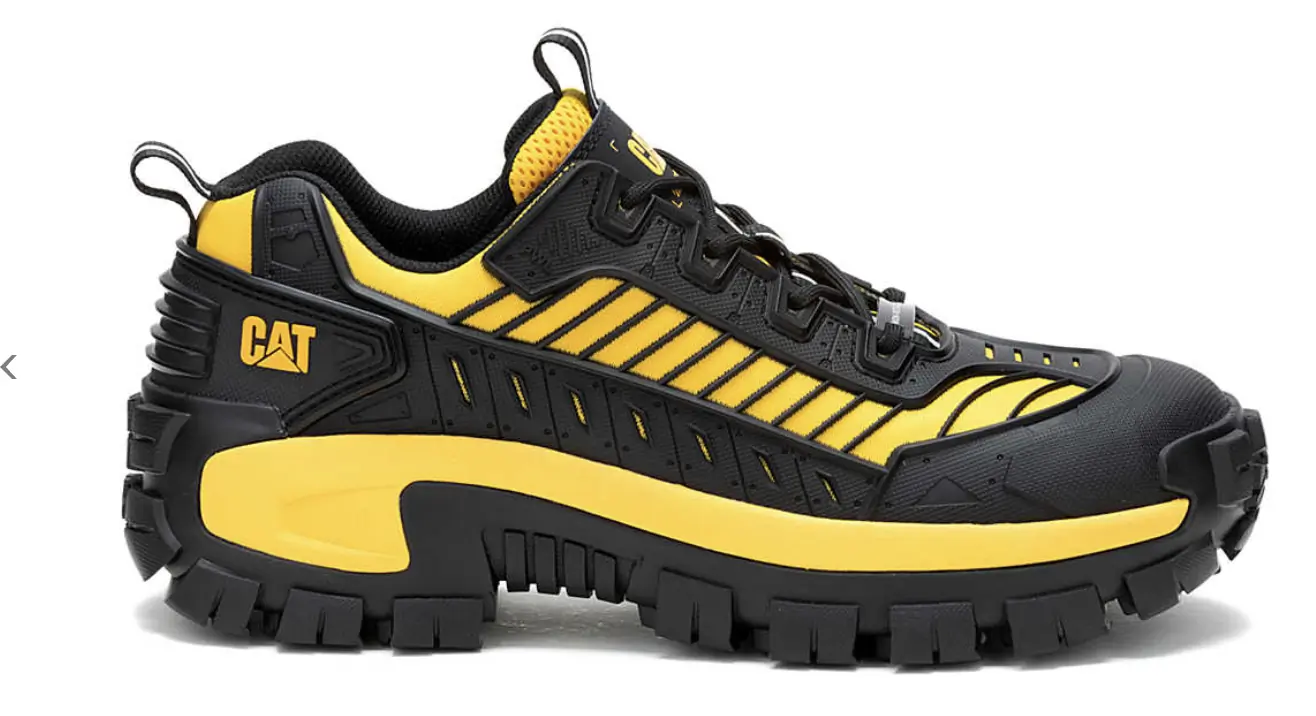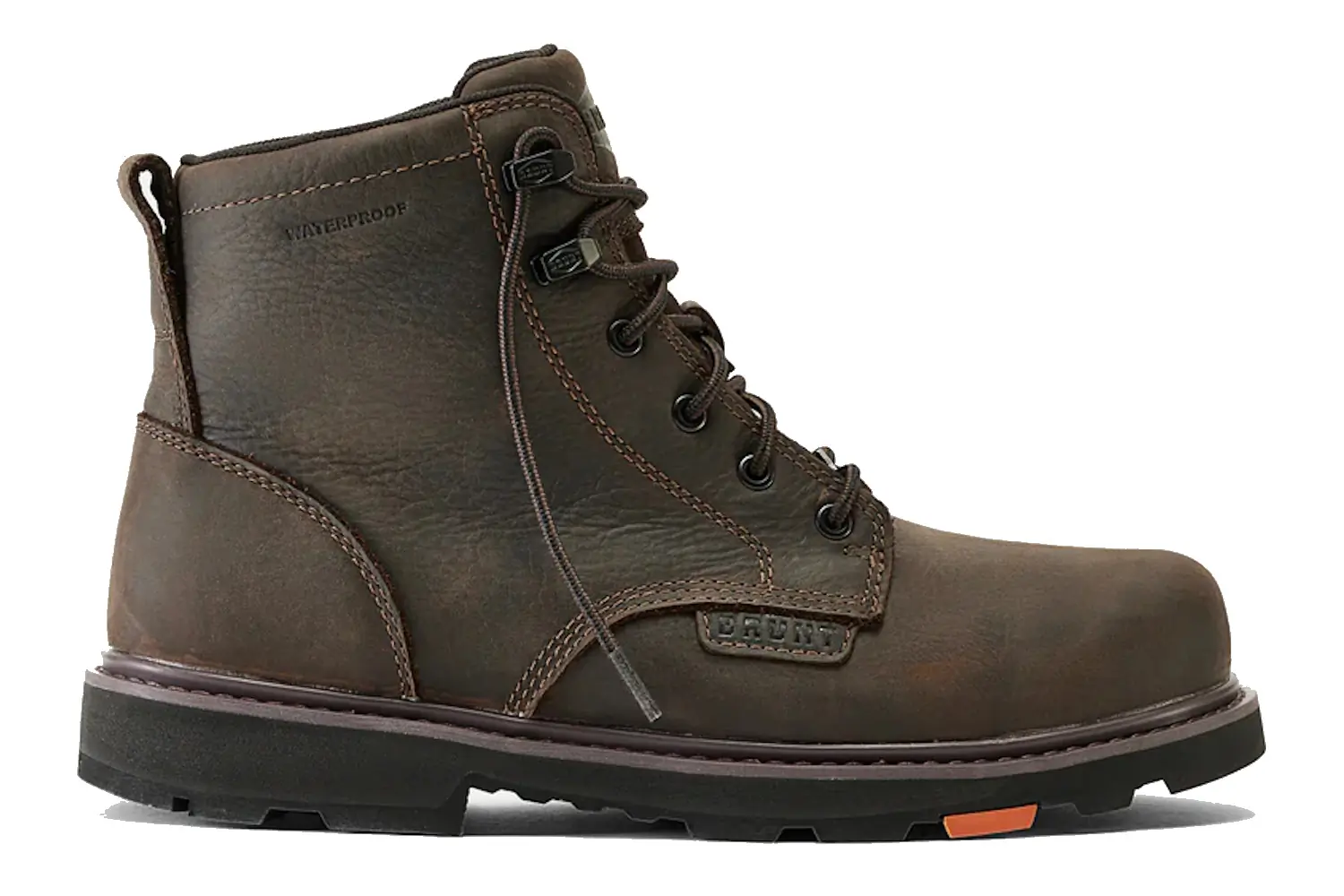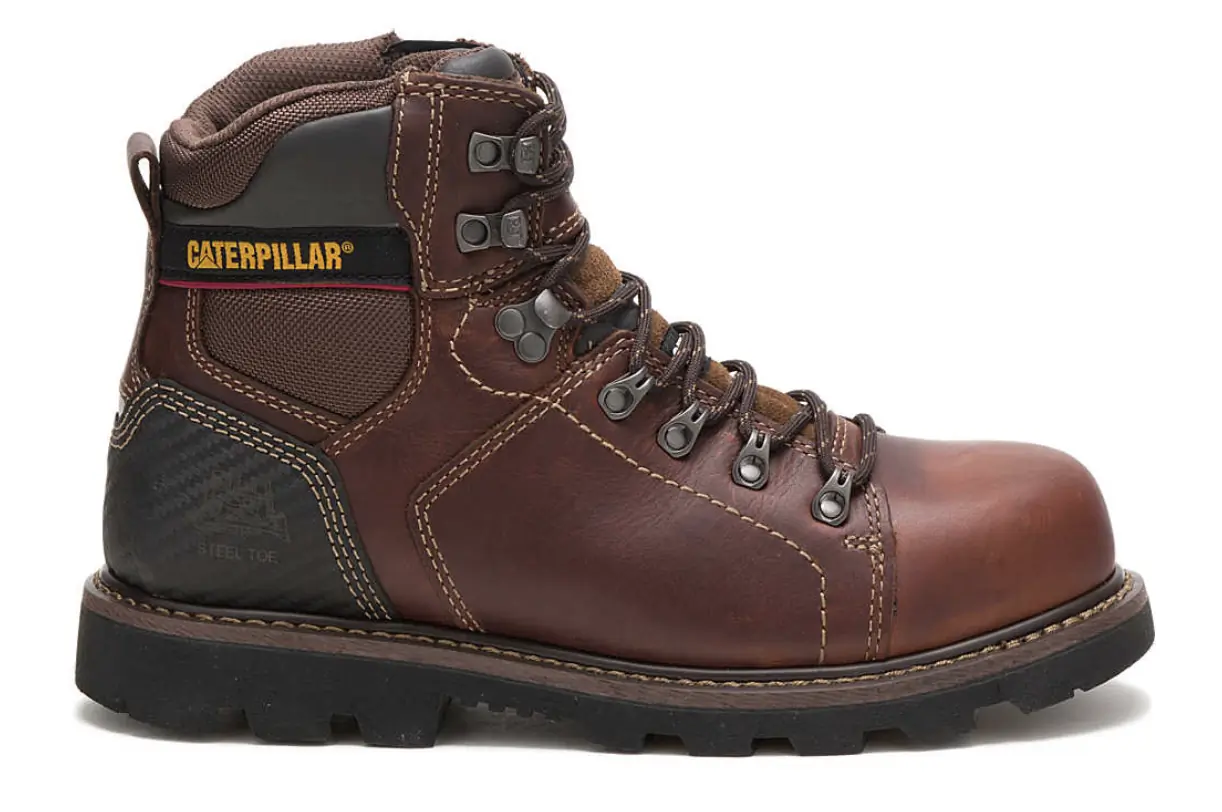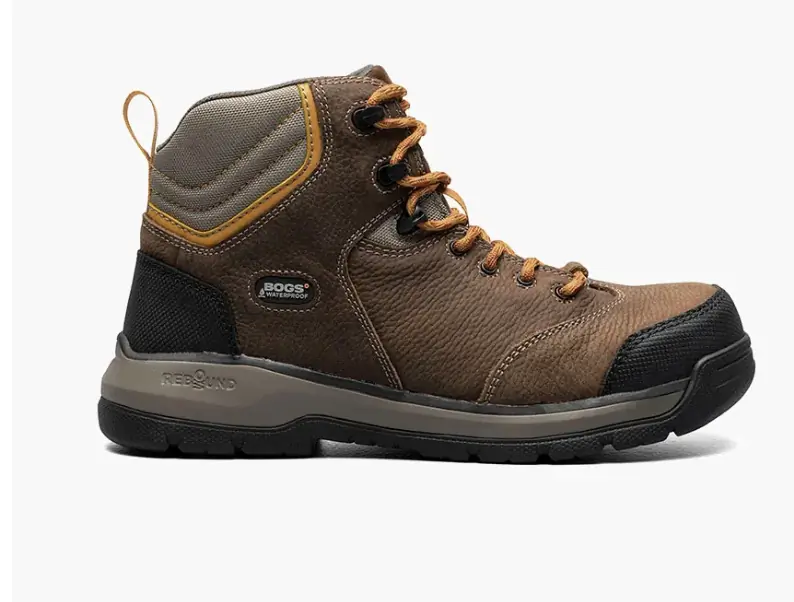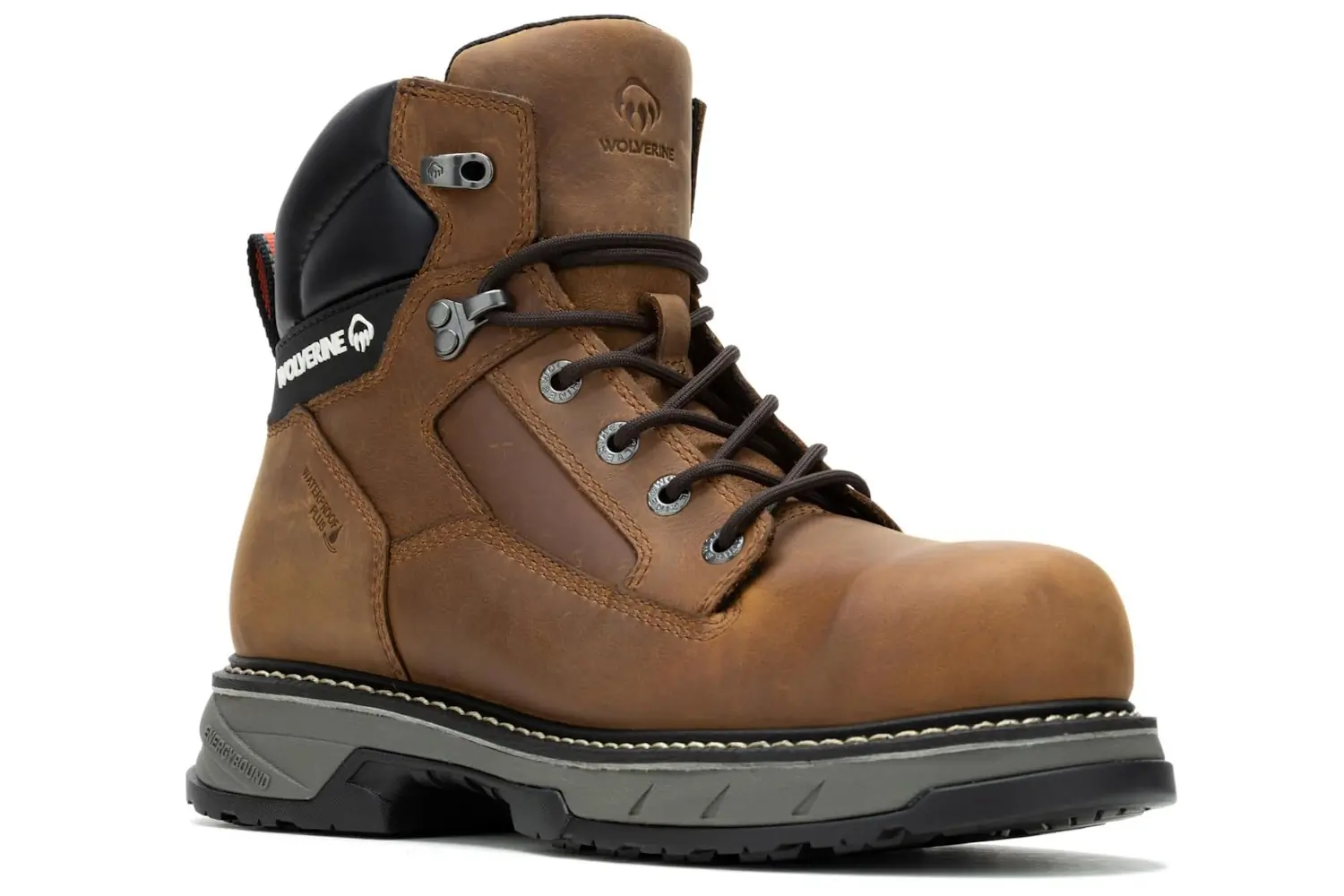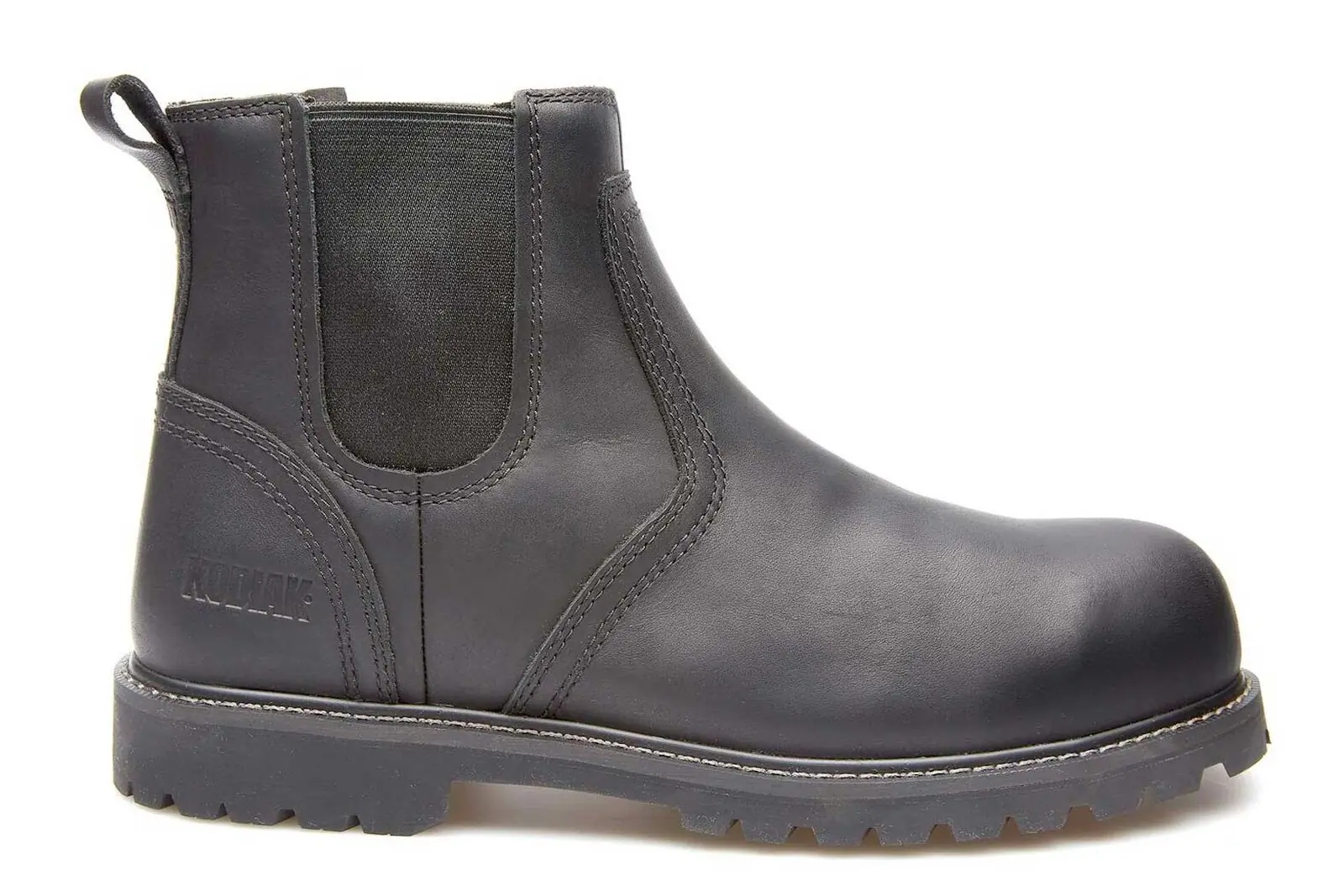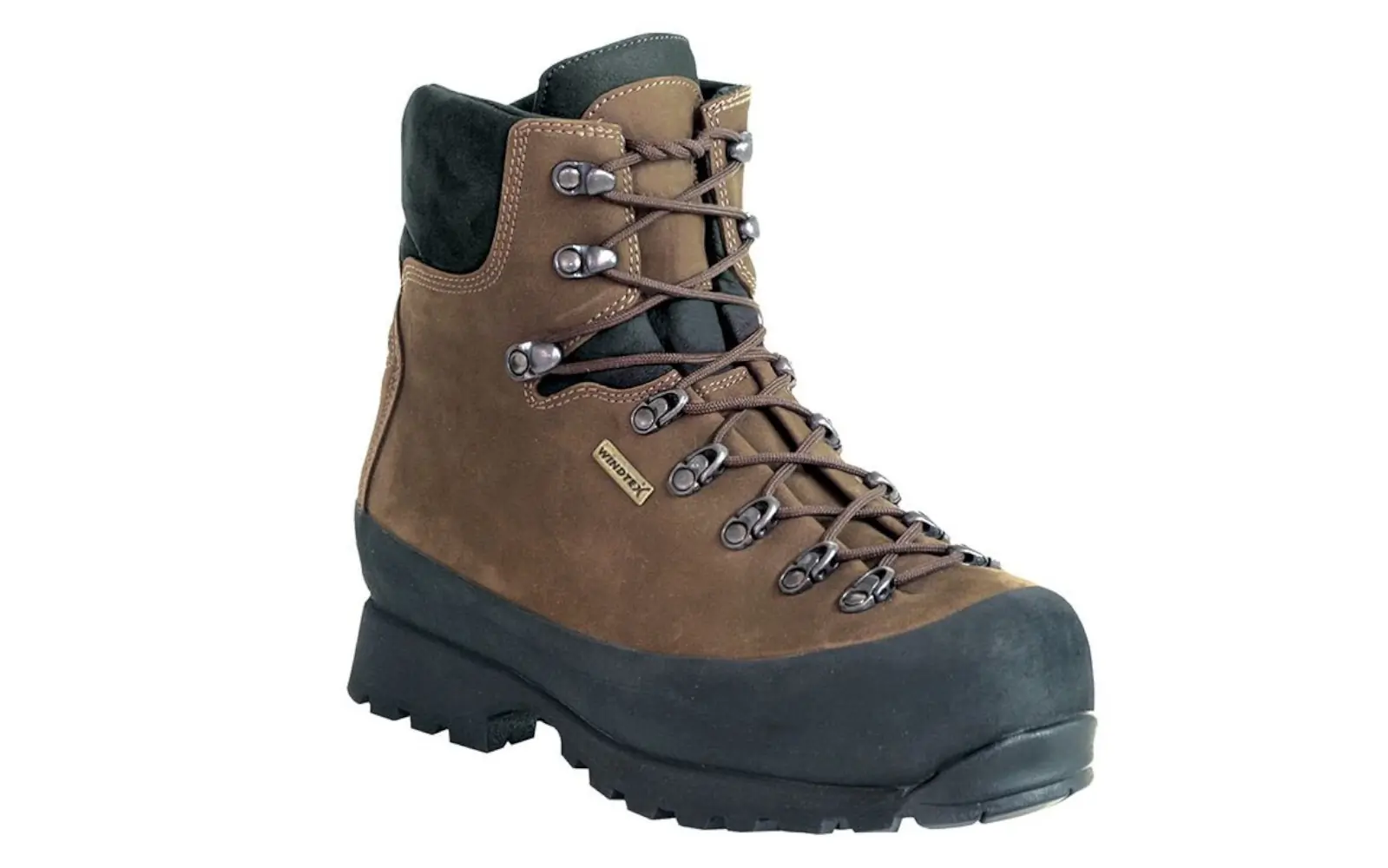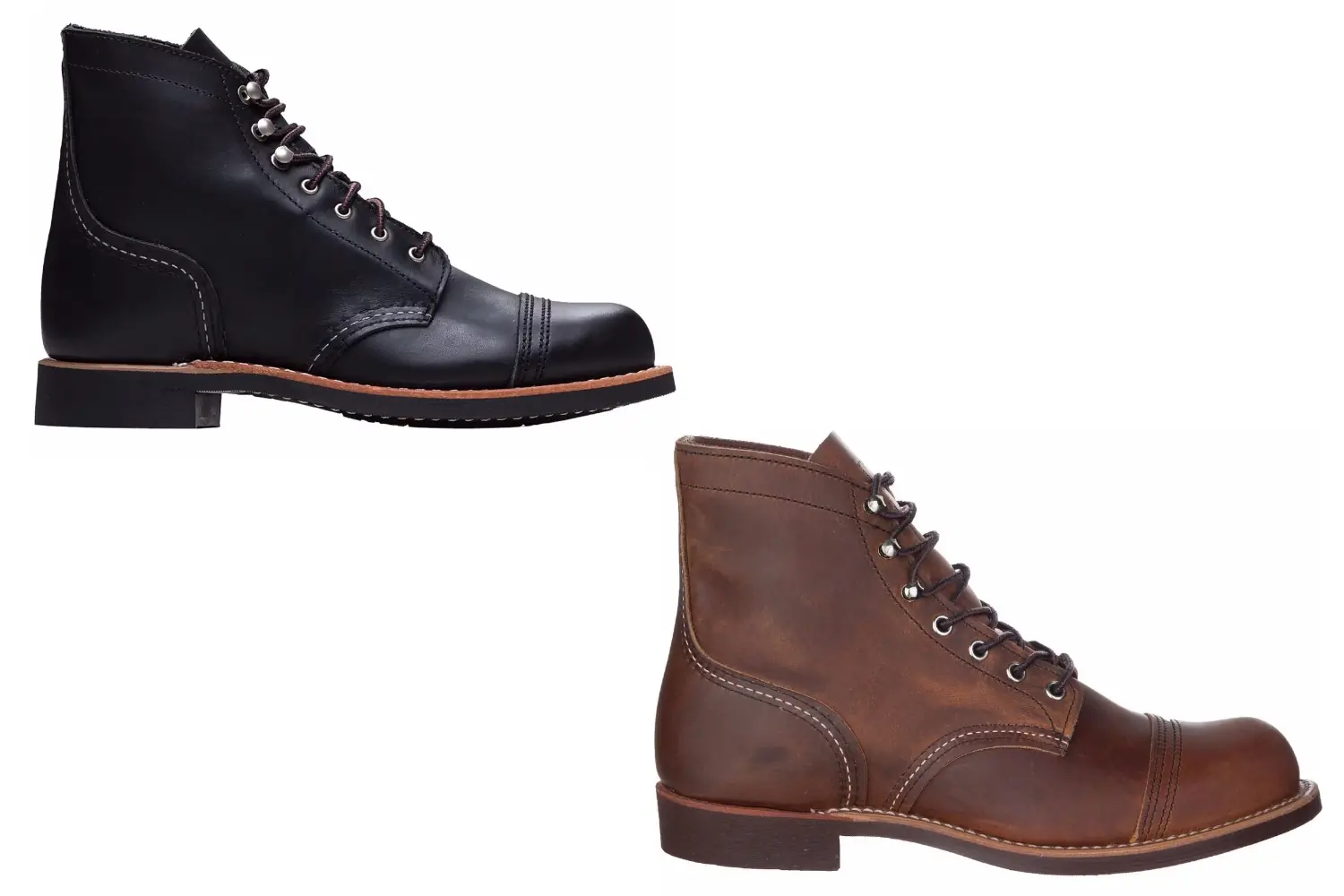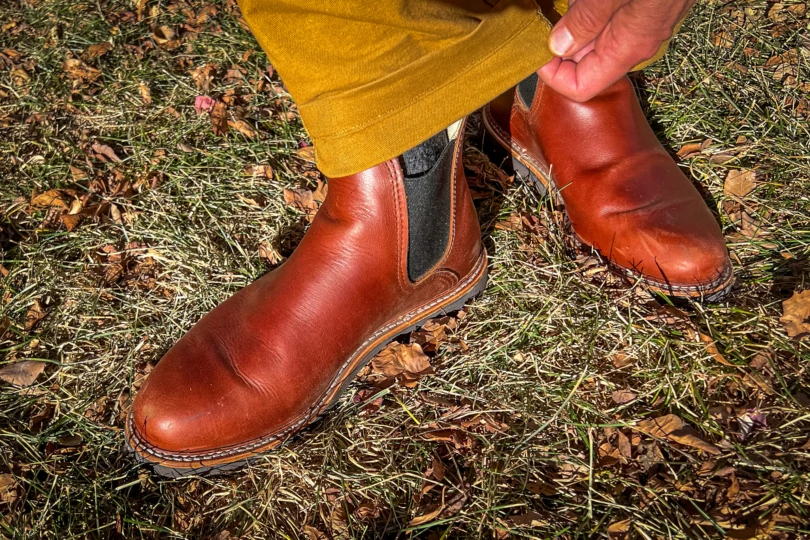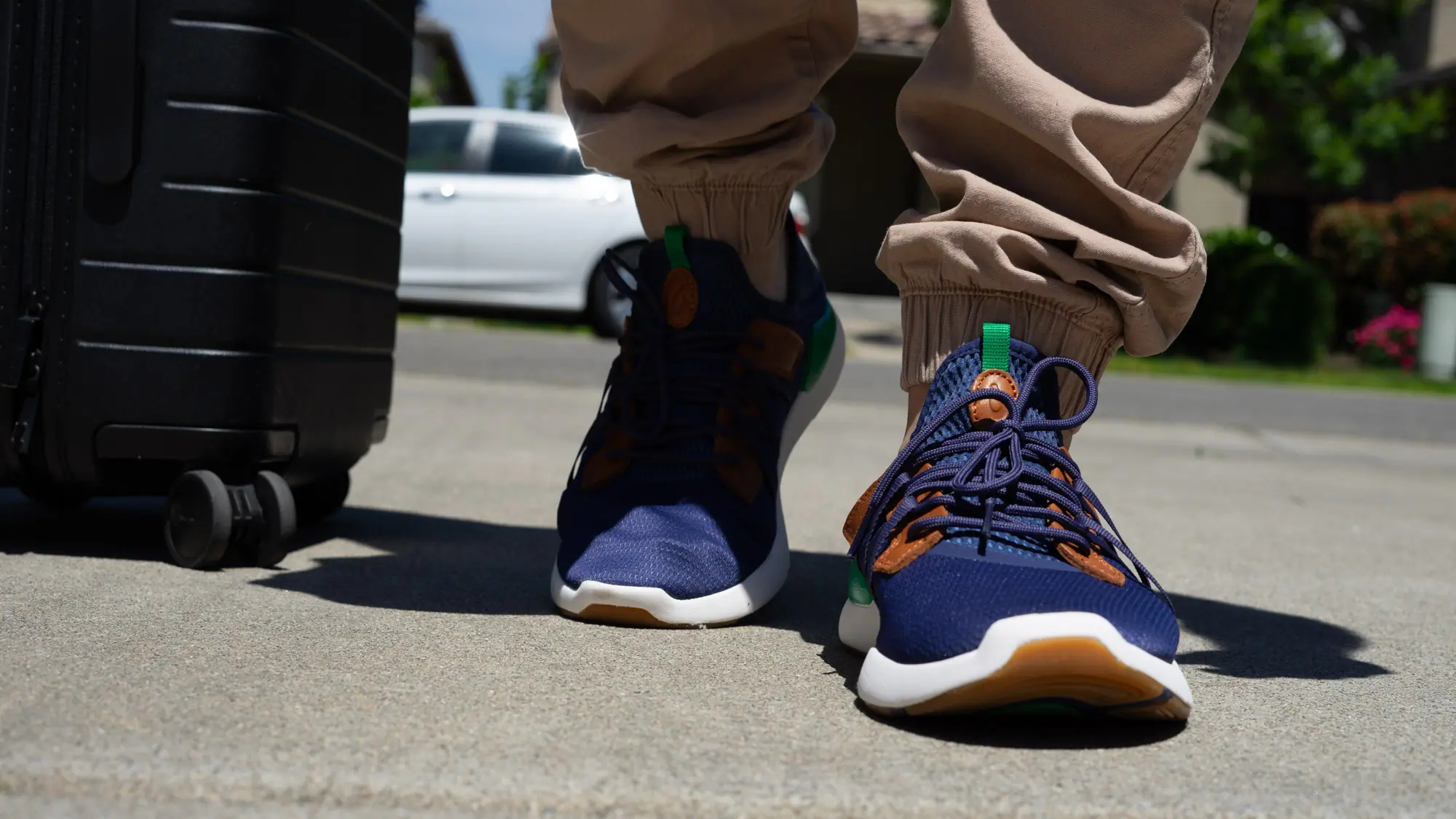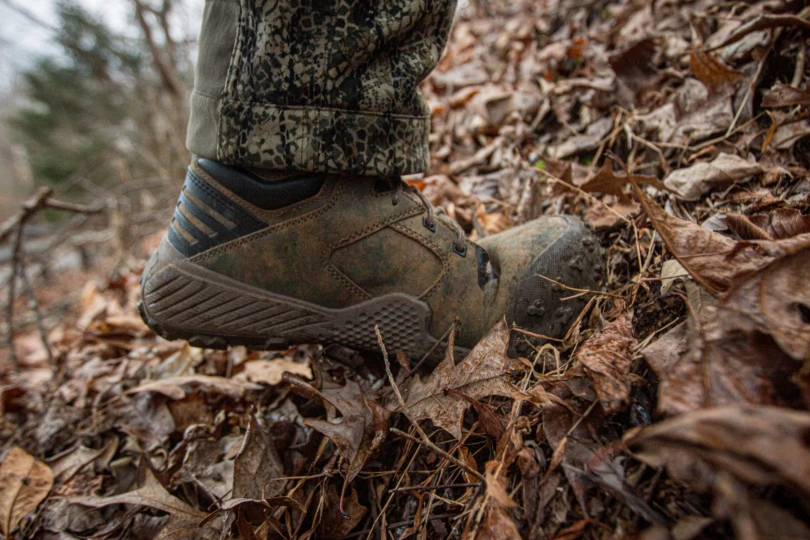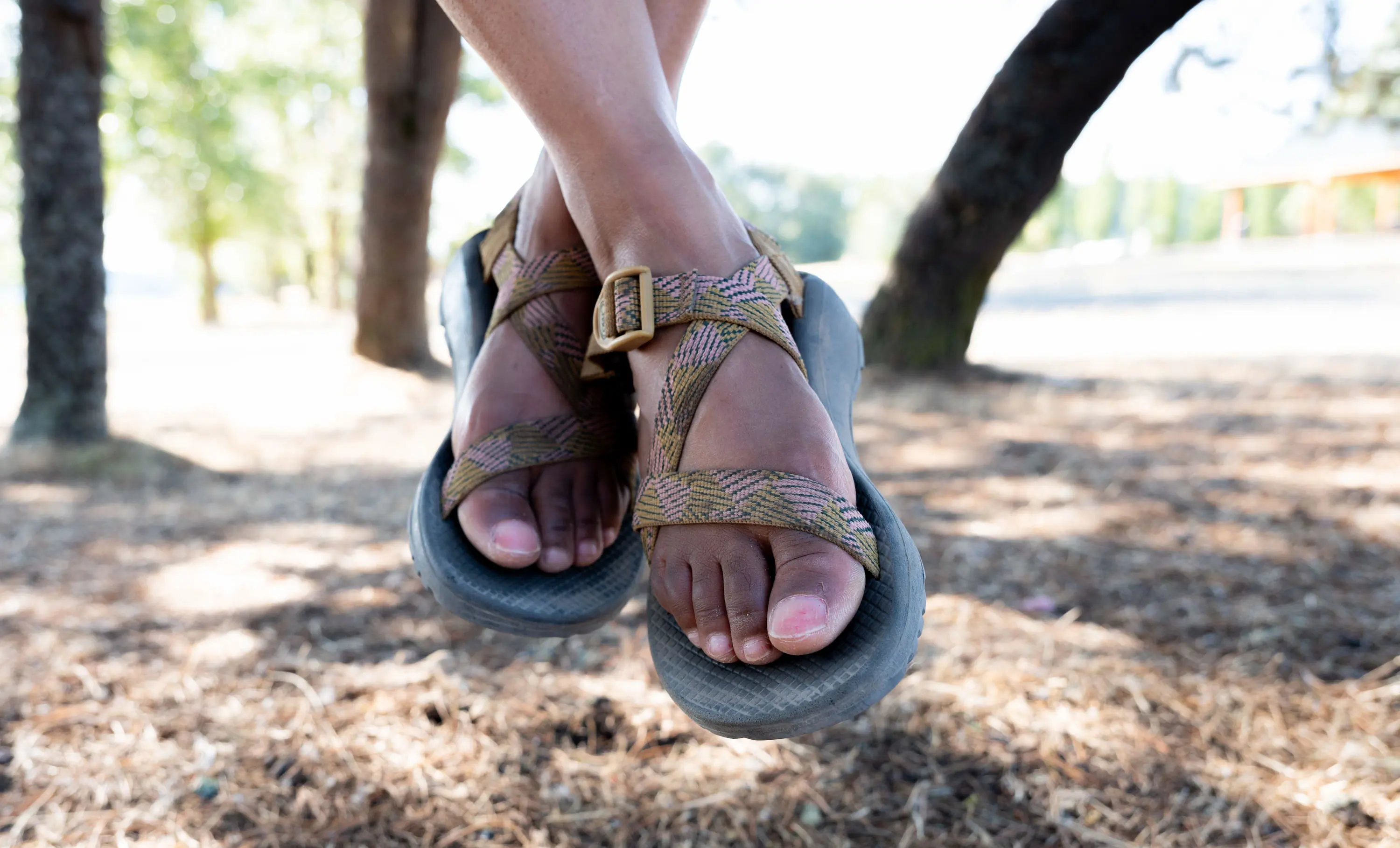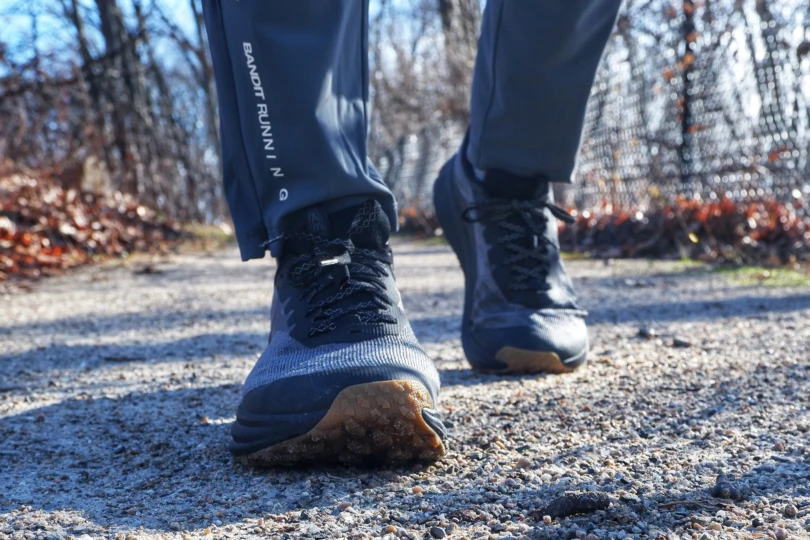Like any tool, there’s a right boot for the job. While most of us will sacrifice comfort for safety and function, bulky and stiff work boots can lead to chronic pain. Overall, the best work boots should balance the competing priorities of comfort and utility.
Even if you’re careful, heavy materials can unexpectedly fall and crush a foot. When that happens, the only thing between you and workers’ comp is a work boot. Finding the proper footwear is a step toward a long and healthy career, so we took dozens of boots to work to find the best ones.
To help you find the best work boot for your needs, we’ve included a buyer’s guide, a price & value section, and a comparison chart. To better evaluate each boot’s utility, we rated each on a “utility scale,” measuring its casual wearability against its utility. So, from weekend chore masters to heavy-duty diesel drivers, here are the best work boots of 2025.
Editor’s Note: We updated this guide on October 28, 2024, to add BRUNT Workwear 6-Inch Sullivan Comp Toe and Wolverine’s Durashocks SR Icon work.
The Best Work Boots of 2025
Top Picks
Timberland PRO Boondock 6-Inch Comp Toe
- Utility-scale: 80% utility, 20% casual; best for heavy-duty work, though light enough for moderate work
- Waterproof: Yes
- Toe protection: Composite
- Electrical hazard protection and other safety considerations: Yes, electrical hazard protection meets F2412-11, F2413-11, and F2892-11
- Weight per boot: 2.2 lbs.
Pros
- Plentiful structural support
- Durable
- Quite warm for a non-insulated work boot
Cons
- On the heavier side, especially for a boot without a steel toe
Caterpillar Second Shift
- Utility scale: 80% utility, 20% casual
- Waterproof: Yes
- Toe Protection: Steel
- Electrical Hazard protection and other safety certifications: Yes, this boot protects the wearer against open circuits up to 600 V in dry conditions (ASTM F2413-18)
- Weight per boot: 2 lbs., 2.5 oz. (size 12)
Pros
- Great value
- Durable, high quality leather upper
- Solid breathability and comfort
Cons
- Advertised as waterproof, but tend to soak through easily
Thorogood American Heritage 6-Inch Moc Toe
- Utility-scale: 50% utility, 50% casual; best for indoor warehouse work or carpentry
- Waterproof: No
- Toe Protection: None
- Electrical hazard protection and other safety certifications: Electric shock-resisting soles and heels capable of withstanding an application of 18,000 V
- Weight per boot: 1 lb. 12 oz. (size 12)
Pros
- Sleek vintage look
- Durable
- Comfortable after long periods on your feet
Cons
- Not waterproof
- Not the most protective
Danner Steel Yard
- Utility-scale: 100% utility indoor/outdoor work, heavy-duty work where total foot protection is necessary
- Waterproof: No
- Toe Protection: Steel, with metatarsal guard
- Electrical hazard protection and other safety certifications: Yes, ASTM F2413-18 I/75 C/75 Mt/75 EH
- Weight per boot: 2.25 lbs. (size 12)
Pros
- Top-notch protection
- Metatarsal shield protects against top-of-the-foot impacts
- Durable
- Comfortable
Cons
- Limited flexibility
- Heavy
Wolverine DuraShocks SR Icon 6-inch Comp Toe
- Utility-scale: 75% utility / 25% casual; outdoor work, all-around work
- Waterproof: Yes
- Toe protection: Composite
- Electrical hazard protection and other safety certifications: ASTM F2413-18 M/I/C EH rated CarbonMax composite-toe and ASTM F3445-21 SR for slip-resistance
- Weight per boot: 1.73 lbs. (size 9)
Pros
- Like walking on clouds
- No break-in period
- Cushioned collar provides additional support
Cons
- Sizing is about a half size bigger than standard sizing
Muck Arctic Pro Steel Toe Boot
- Utility Scale: 80% utility, 20% casual; best for heavy-duty winter work
- Waterproof: Yes
- Toe protection: Steel
- Electric hazard protection and other safety certifications: Yes, F2413-11 M I/75 C/75 EH
- Weight per boot: 2.2 lbs. (size 12)
Pros
- Ideal for cold conditions and deep snow
- Warm
- Good traction in snow and muck
Cons
- Only available in whole sizes
Blundstone #172
- Utility-scale: 70% utility, 30% casual; indoor/outdoor work, all-around work
- Waterproof: Leather is waterproof but elastic stretch panels are not
- Toe protection: Steel
- Electrical hazard protection and other safety certifications: ASTM F2413-18 M I C EH
- Weight per boot: 1.3 lbs per boot
Pros
- Durable
- Easy on/off
- Protective toe kick guard
Cons
- Not ideal for outdoor use in winter
CAT Invader Mecha Composite Toe Work Shoe
- Utility-scale: 85% utility, 15% casual; best for long days on your feet
- Waterproof: Yes
- Toe protection: Composite
- Electrical hazard protection and other safety certifications: ASTM F2413-18,
- Weight per boot: 1.11 lbs per shoe size 12
Pros
- Comfortable
- Lightweight
- Durable
Cons
- Doesn’t breathe well with high output activity
- May not meet jobsite "boot" requirements
BRUNT Workwear 6-Inch Sullivan Comp Toe
- Utility-scale: 80% utility, 20% casual; best for heavy-duty work, though light enough for moderate work
- Waterproof: Yes
- Toe protection: Composite
- Electrical hazard protection and other safety certifications: ASTM F2413-18
- Weight per boot: 1 lb., 14 oz. (size 9)
Pros
- Built-in adjustable width
- Lightweight
- Exceeds multiple ASTM standards
- Waterproof
- Slip and high-heat-resistant
Cons
- Adjustable width feature can be tricky
- Utility-scale: 85% utility, 15% casual; best for outdoor-heavy use, but nimble enough for indoor work as well
- Waterproof: Yes
- Toe protection: Steel
- Electrical hazard protection and other safety certifications: ASTM F2892-18 rated to protect against open circuits up to 600 V in dry conditions
- Weight per boot: 2 lbs., 3.1 oz. (size 12)
Pros
- Comfortable
- Durable outsole and upper
- Breathable
- Accurate sizing
- Good value
Cons
- Low-quality included laces
- Utility-scale: 75% utility / 25% casual; outdoor work, all-around work
- Waterproof: Yes
- Toe protection: Steel
- Electrical hazard protection and other safety certifications: Yes, F2413-11 / M I/75 C/75
- Weight per boot: 2 lbs. (size 12)
Pros
- Uncommonly comfortable
- Minimal break-in required
- Perfect for wide feet
Cons
- Not the most supportive around the ankle joint
- Utility-scale: 80% utility, 20% casual; best for indoor work that needs additional toe protection
- Waterproof: Yes
- Toe protection: Steel
- Electrical hazard protection and other safety considerations: Secondary protection against incidental contact with electrical circuits of 18,000 volts or less under dry conditions; Meets ASTM F2413-18 EH standards
- Weight per boot: 1.7 lbs., (size 8)
Pros
- Durable
- Waterproof
- Breathable
Cons
- Long break-in period
- Lugs are not aggressive
- Utility-scale: 85% utility, 15% casual; best for long days on your feet
- Waterproof: Yes
- Toe protection: Composite
- Electrical hazard protection and other safety certifications: ASTM F2413-18 M/I/C EH
- Weight per boot: 1.88 lbs per boot based on 6” safety-toe style
Pros
- Short break-in time
- Durable
Cons
- Run large
- Don't breathe well
- Utility scale: 70% utility, 30% casual; indoor/outdoor work, all-around work
- Waterproof: Leather is waterproof but elastic stretch panels are not
- Toe protection: Composite
- Electrical hazard protection and other safety certification: Yes, F2413 I/75 C/75 EH PR
- Weight per boot: 2 lbs. (size 12)
Pros
- Comfortable
- Nice-looking
- More work-capable than most other Chelsea-style boots
Cons
- Runs large
- Not ideal for wet conditions or deep snow
- Utility-scale: 80% utility, 20% casual; best for heavy-duty work, though light enough for moderate work
- Waterproof: Yes
- Toe protection: Steel
- Electrical hazard protection and other safety certifications: Yes, ASTM F2412-11 and ASTM F2413-11 impact, compression and electrical hazard safety standards
- Weight per boot: 1.9 lbs.
Pros
- Excellent ankle support
- Ideal for mud, snow, and loose outdoor surfaces
- Durable
Cons
- Requires some break-in
- Utility-scale: 80% utility, 20% casual; indoor/outdoor work, all-around work
- Waterproof: Yes
- Toe protection: Options include plain, composite, or floating PU metatarsal guard
- Electrical hazard protection and other safety certifications: Yes, ASTM F2892-1
- Weight per boot: Varies based on options; 1.2 to 2.2 lbs.
Pros
- Comfortable
- Minimal break-in required
- Effective waterproofing
Cons
- On the pricey side
- Utility-scale: 25% utility, 75% casual; capable of light-duty shop work, but lack of safety toe makes this better off the shop floor
- Waterproof: No
- Toe protection: No
- Electrical hazard protection (and other safety certifications): N/A
- Weight per boot: 1.8 lbs.
Pros
- Top-notch build quality
- Made in America
- Elegant styling
- Doubles as a dress boot
- Durable
Cons
- Not ideal for heavy duty work
- Expensive
Best Work Boots Comparison Chart
| Work Boots | Price | Waterproof | Toe Protection | Electrical hazard protection and other safety certifications | Weight per boot |
|---|---|---|---|---|---|
| Timberland PRO Boondock 6-inch Comp Toe | $200 | Yes | Composite | Yes, electrical hazard protection meets F2412-11, F2413-11, and F2892-11 | 2.2 lbs. (size 9) |
| Caterpillar Second Shift | $115 | Yes | Steel | Yes, this boot protects the wearer against open circuits up to 600 V in dry conditions (ASTM F2413-18) | 2 lbs., 2.5 oz. (size 12) |
| Thorogood American Heritage | $250 | No | Available as an option | Electric shock-resisting soles and heels capable of withstanding an application of 18,000 V | 1 lb. 12 oz. (size 12) |
| Danner Steel Yard | $200 | No | Steel, with metatarsal guard | Yes, ASTM F2413-18 I/75 C/75 Mt/75 EH | 2.25 lbs. (size 12) |
| Wolverine DuraShocks SR Icon 6-Inch Comp Toe | $165 | Yes | Composite | ASTM F2413-18 M/I/C EH rated CarbonMax® composite-toe and ASTM F3445-21 SR for slip-resistance | 1.73 lbs. (size 9) |
| Muck Arctic Pro | $215 | Yes | STeel | Yes, F2413-11 M I/75 C/75 EH | 2.2 lbs. (size 12) |
| Blundstone #172 | $205 | Leather is waterproof but elastic stretch panels are not | Leather is waterproof, but elastic stretch panels are not | ASTM F2413-18 M I C EH | 1.3 lbs. (Size 8) |
| CAT Invader Mecha Composite Toe Work Shoe | $145 | Yes | Composite | ASTM F2413-18 | 1.11 lbs. (Size 12) |
| BRUNT Workwear 6-Inch Sullivan Comp Toe | $156 | Yes | Composite | ASTM F2413-18 | 1 lb., 14 oz. (size 9) |
| Carhartt Waterproof 6″ MOC Steel Toe Wedge | $175 | Yes | Steel | Secondary protection against incidental contact with electrical circuits of 18,000 volts or less under dry conditions; Meets ASTM F2413-18 EH standards | 1.7 lbs. (size 8) |
| Kenetrek Hardscrabble ST | $470 | Yes | Steel | Yes, ASTM F2412-11 and ASTM F2413-11 impact, compression and electrical hazard safety standards | 1.9 lbs. (Size 12) |
| Timberland PRO Boondock | $200 | Yes | Composite | Yes, electrical hazard protection meets F2412-11, F2413-11, and F2892-11 | 2.2 lbs. (Size 12) |
| Kodiak McKinney | $180 | No | No, composite toe | Yes, F2413 I/75 C/75 EH PR | 2 lbs. (size 12) |
| Danner Vicious | $220 | Yes | No, though toe protection options exist | Yes, ASTM F2892-1 | Varies based on options; 1.2 to 2.2 lbs. |
| Wolverine Reforce Energybound 6” Carbonmax | $170 | Yes | No, composite toe | ASTM F2413-18 M/I/C EH | 1.88 lbs. (Size 12) |
| Red Wing Iron Ranger | $350 | No | No | N/A | 1.8 lbs. (Size 12) |
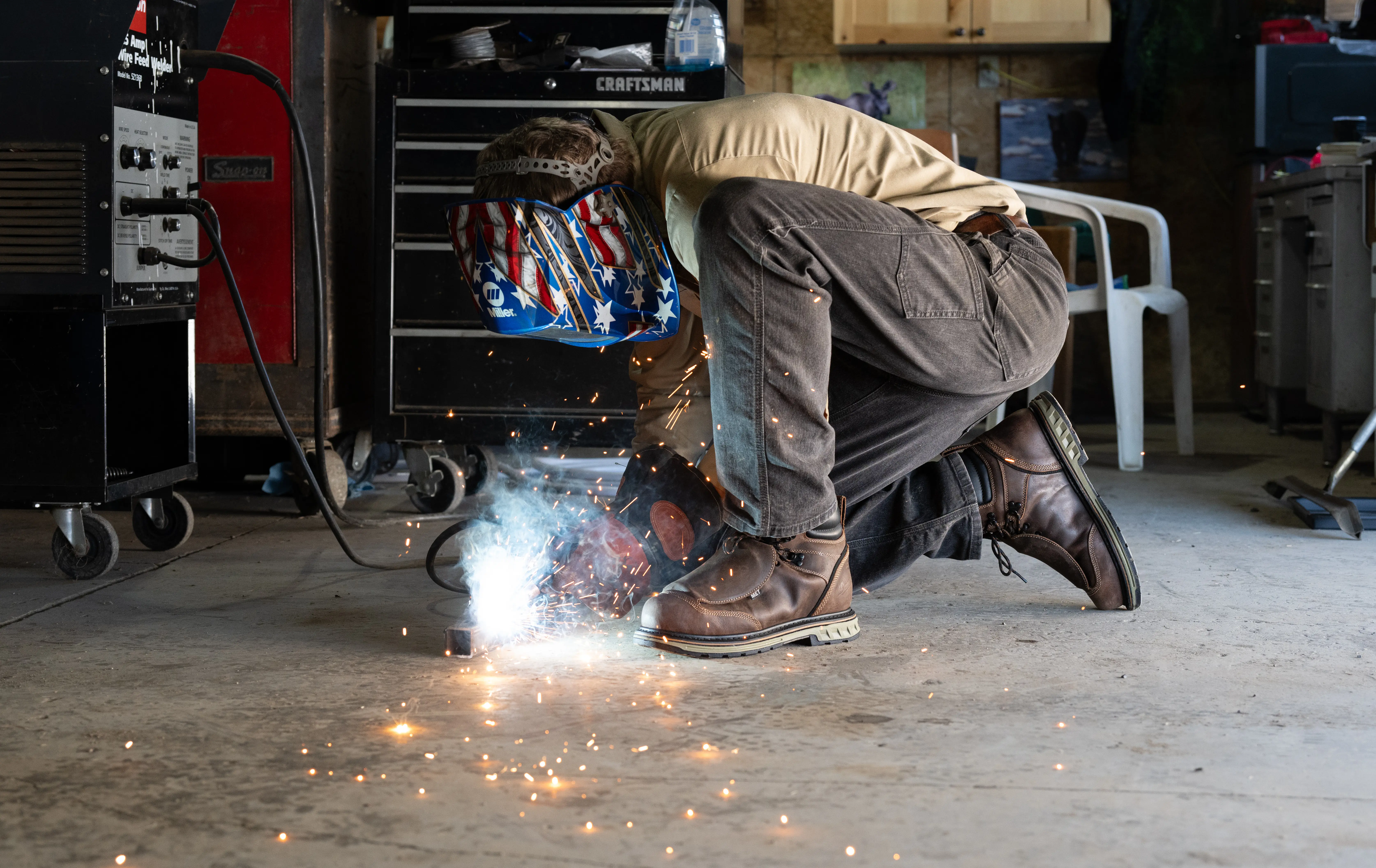
How We Tested the Best Work Boots
Our Expert Testers
Constance Mahoney grew up on a cattle ranch in Montana. She is no stranger to long days on her feet in all weather conditions. She understands the importance of having the right boot for the job and thinks work boots are just as important as the tools she works with. Quality matters.
Constance’s husband, Taylor, has been working in the trades since 2006, and is on-site 5 days a week putting the gear he’s wearing to the real test. He is also a licensed chiropractor trained in biomechanics, gait, and orthotics, giving him a unique perspective on how work boots should support, fit, and flex.
Nick LeFort started his career as a teen selling work boots for one of the largest workwear retailers in New England. He eventually ended up working in multiple environments that required work boots to keep him safe and comfortable during long days on his feet. In fact, he’s been known to wear work boots out on the trail when he’s hiking.
In the last decade, LeFort has owned three pairs of Timberland PRO Boondock 6-inch Comp Toe. As both an engineer and someone working down on the assembly floor, he lauds them for their comfort and, as he will tell you, being able to kick things around when your hands are full.
Our Testing Process
Work boots make up almost one-third of all the footwear sold in North America. With that kind of statistic comes a wide variety all with different heights, different features, and different forms of protection for your feet in the workplace.
Here at GearJunkie, we don’t shy away from manual work. Most of us either work blue-collar jobs, have worked blue-collar jobs, or punish ourselves with laborious tasks during our free time. Our crew is used to being on their feet for hours in all different weather and working conditions. In any case, safety, stability, and comfort are all a priority when work boots are a necessity.
Hiking in Work Boots: Some of the boots in our selection are versatile enough to hike in, and some of us do. However, if you’re looking to get into the woods after you’ve clocked out, check out any of our other guides for further inspiration, like our list of the best hiking boots, best hiking shoes, and best hunting boots.
Boots that aren’t made to certain standards or are ill-fitting can be more than uncomfortable — they can be dangerous. That is why it is so important for us to list all of the safety ratings for the boots in this guide.
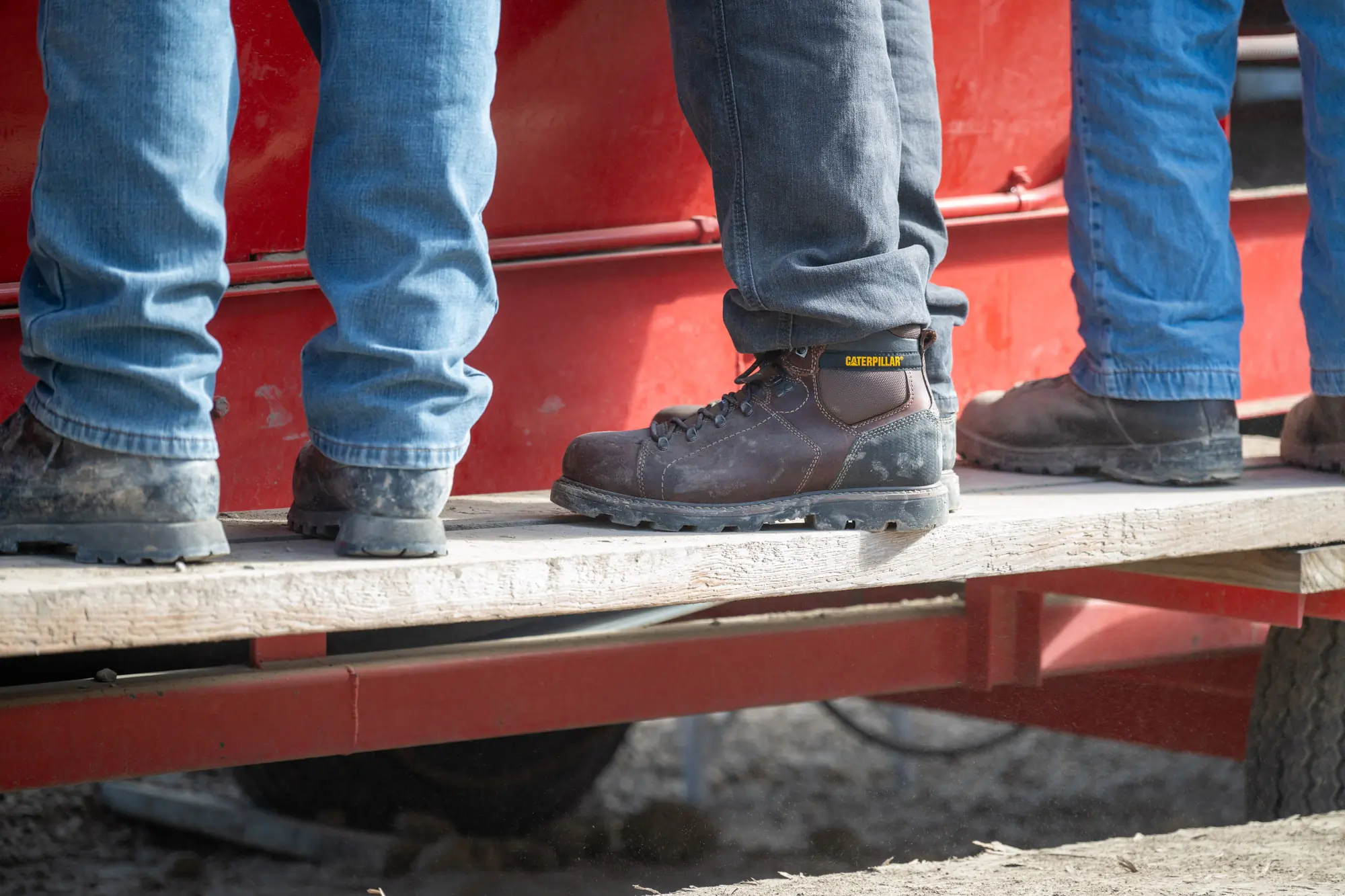



Buyer’s Guide: How to Choose the Best Work Boots
Soles
Of course, a work boot should protect your feet, but the unsung task of the work boot is to enable you to work hour after hour, day after day.
If the boot isn’t working, your legs, hips, back, and neck will compensate and eventually take the brunt (and do so with less grace). Above all else, a work boot’s task is to address stress at the ground level. A comfortable boot is arguably a safer boot. You’ll be more sure-footed and focused on the task at hand in a comfortable boot.
The outsole is where the rubber meets the road. Riding over the cushiony midsole and in direct contact with the ground, the outsole is about grip and protection.
Many boots use special formulas of urethane compounds that strike a balance of flexibility, durability, and increased traction on slick surfaces. If you work in shops where oils occasionally spill on the floor, look for shoes that specifically indicate oil and slip resistance. The best of the best are certified to meet SRC slip-resistance standards.
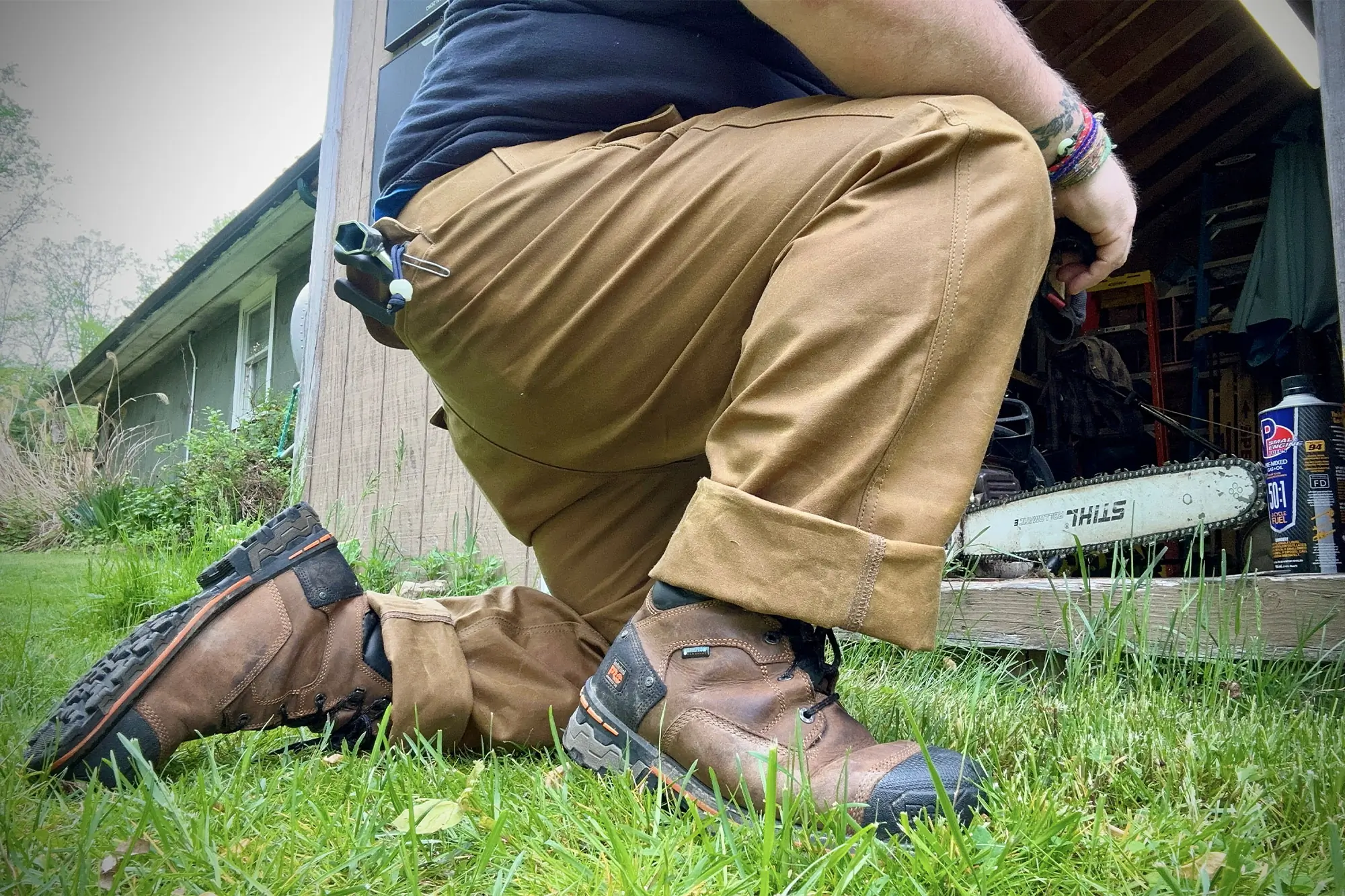



For standing all day on concrete, we prefer the simple wedge-shaped sole. Unlike a heeled boot, the sole has full contact with the ground. This helps absorb the shock with every step and disperses forces equally across the sole. A full-contact outsole also adds a little extra traction and, hence, is often a preferred sole for those working on slick surfaces.
When you think of the wedge sole, you immediately think of the classic moc-toe boot. We listed Thorogood’s American Heritage 6-inch moc toe MAXwear Wedge as our preferred soft-toe boot. But if your shoes are resoleable, a wedge sole can be added to any work boot regardless of the toe type.
If you’re standing all day on cement, like working the floor at Costco, a wedge-shaped sole should be on your list. Or, if your work brings you outside, look for a hiker-like tread that provides more traction in dirt and mud.
Sitting opposite the wedge sole is the heeled boot. The raised cowboy-style heel shifts your center of gravity slightly forward. These boots can be extremely durable and stable. But that gap between the heel and under the ball of the foot doesn’t give the foot full contact with the ground.
Because of this, they can feel a little squirrelly on slick ground. But they seat well with climbing spurs and have added ankle stability while climbing. Hence, you’ll often find taller heels on logger-style boots.
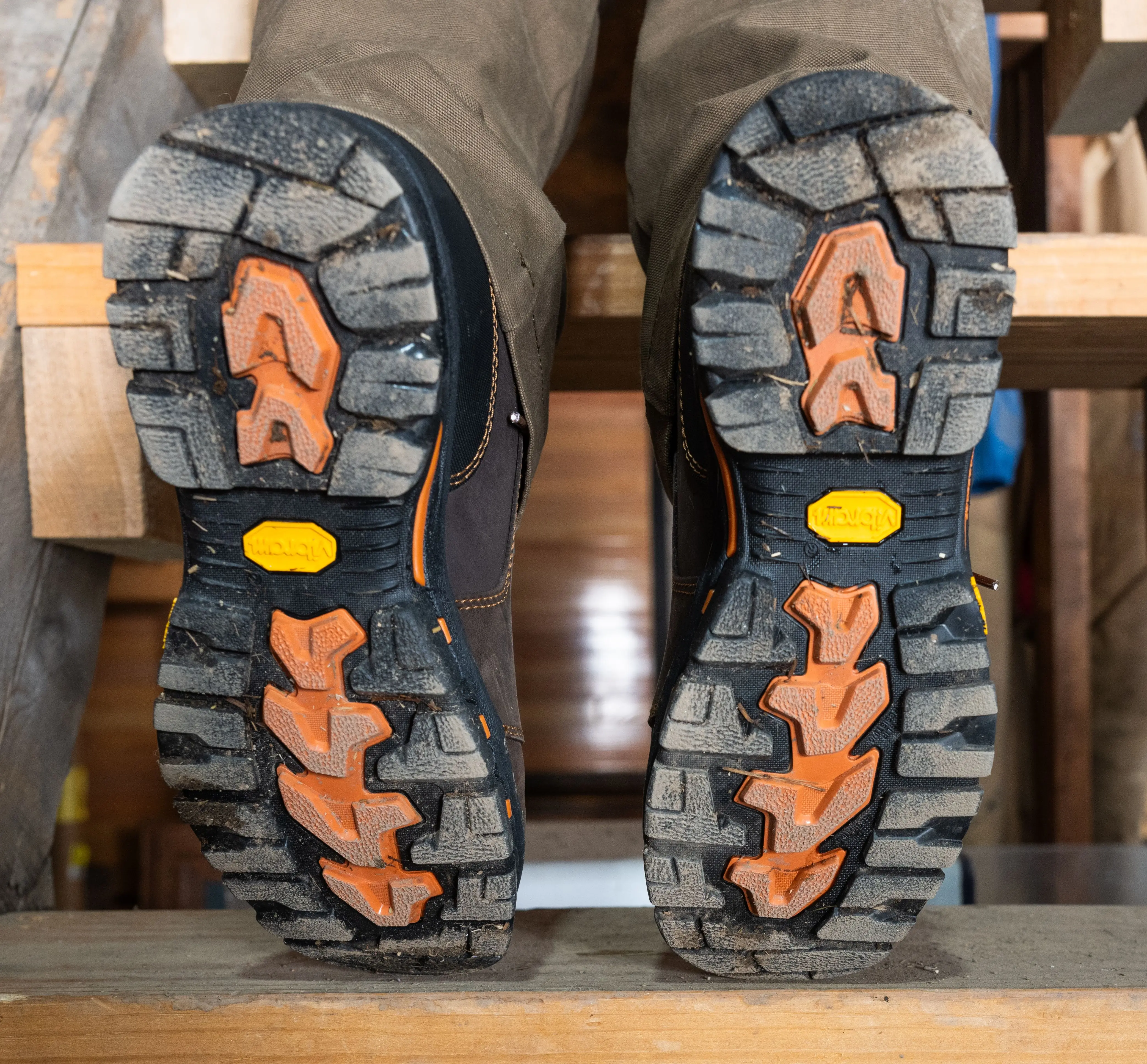



Soles can be cemented or welted to the boot. Cemented boots are lighter, more flexible, and arguably more comfortable out of the box. But once the sole wears out, shoes with cemented outsoles are irreparable.
A Goodyear welt can be resoled several times, increasing the life of your purchase. The outsole welt is sewn to the bottom of the shoe, enabling boots to be sewn and re-sewn multiple times. The shoe won’t be as comfortable underfoot as a boot cemented to an EVA midsole, but the durability and support are reasonable trade-offs. Over time, slipping into a Goodyear-welted boot will feel wonderfully comfortable.
Need more support? Consider an aftermarket insole. Available in a variety of thicknesses and cushion levels, Superfeet orthotics add a touch of personalized support to your boot. We particularly recommend an aftermarket insole for boots that lack a midsole.
Weatherproof
Dry feet are warm feet. If you’re working in truly wet conditions — like pulling crab pots off the Aleutian Islands — look for 100% waterproof boots. If it’s both wet and cold, upgrade to a thicker neoprene shell like Muck Boot’s fleece-lined Arctic Pro. It’s both 100% waterproof and rated down to -60 degrees F.
Other boots, like the BOGS Bedrock, use waterproof leather. In addition to waterproof leather, Timberland’s Boondocks and Kenetrek Hardscrabble ST boots add a waterproof-breathable membrane to keep moisture out. These membranes allow boots to be both waterproof and breathable.
Insulation




Cold-weather boots include a thermal footbed and insulation in the shaft. The insulation is listed in the fabric’s weight per yard in grams. The higher the gram count, the warmer the boot is.
For cold job sites, we recommend boots with no less than 200 grams of insulation in the liner (with 400 grams the preferred winter standard). Muck Boot’s Arctic Pro has a fat neoprene outer lined with fleece.
If winter work boots have a safety toe, look for boots with insulation around the cap (or composite cap). This reduces the conductive effects of heat transfer from the toes to the safety toe.
High-vis accents are also great, especially if your work starts and ends in the dark or if you’re working roadside.
Toe Protection
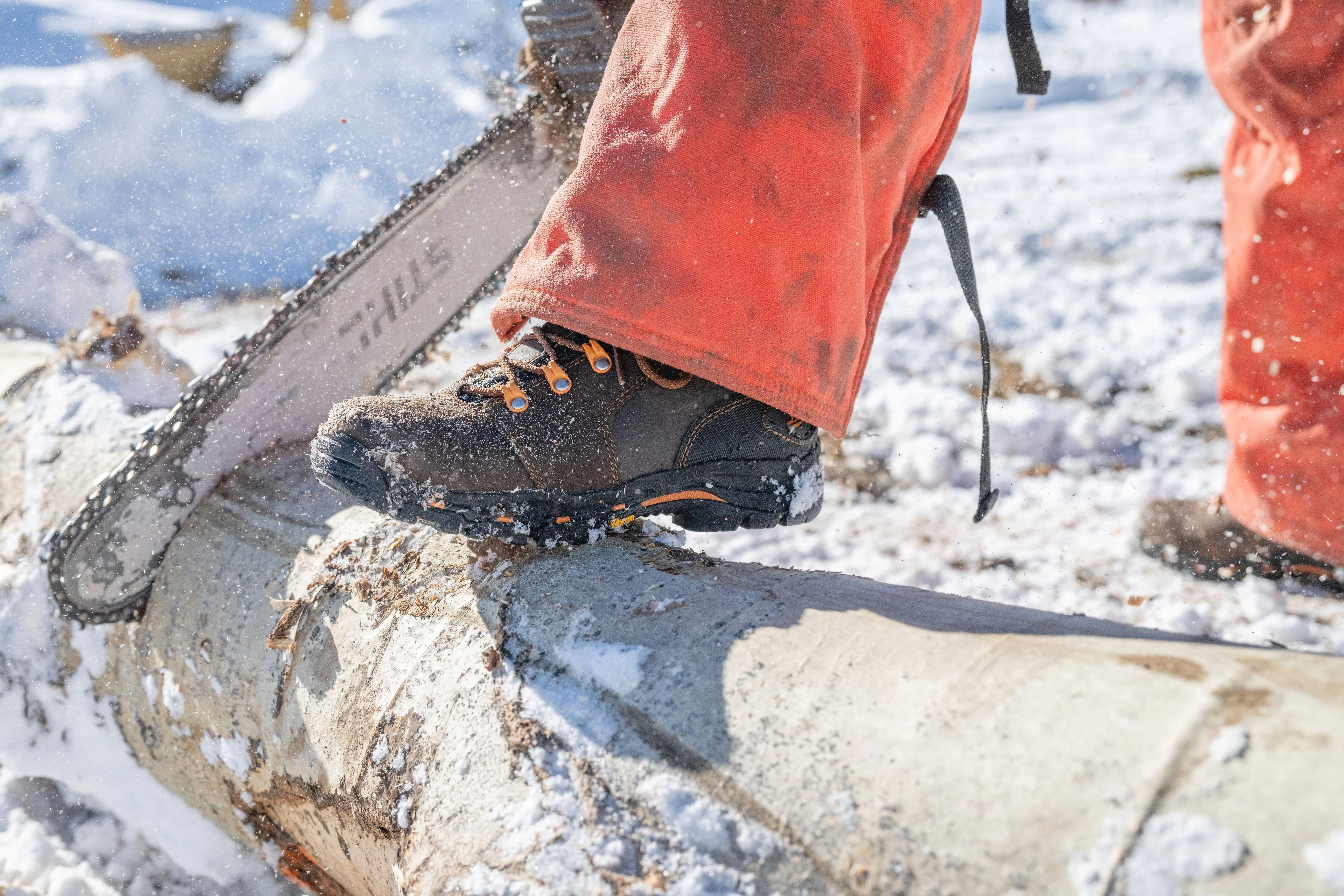



When he was younger, our lead tester’s dad worked on a farm that still plowed the fields with steel-wheeled tractors. Long story short, he now has nine toes. The importance of protective boots can’t be overlooked.
“Safety boots” are boots that have a protective cap that covers the phalanges (your actual toes). The cap resists compression, puncture, and impact forces.
Steel toe versus safety toe: What’s the difference? All steel-toe boots are considered safety-toe boots. Safety-toe boots are available in composites, alloys, Kevlar, and hard plastics. Steel is more durable and is considered the gold standard on many job sites. But they can conduct cold, heat, and electricity. Our top pick for a steel-toe boot is the Caterpillar Alaska 2.0 steel-toe boot. The Caterpillar (CAT) Second Shift steel-toe work boot is a great budget-friendly option.
Composites still meet the compression and impact safety standards, but they may only be able to sustain one of these impacts. On the flip side, composite-toe boots are lighter and won’t conduct currents. If you need toe protection on cold-weather job sites or work with high-voltage equipment, consider buying a non-metallic safety toe boot like the Perkins boot. Or if you are looking for an office boot with a composite toe, check out Kodiak’s McKinney Chelsea.
Nineteen of the foot’s 26 bones sit under the tongue and vamp of a shoe. The five bones that connect the toes to the ankle and form the arch of the foot are your metatarsals. Some boots like the Danner Steel Yard come with an additional protective “met-guard” that lies over the laces, protecting the metatarsals.
ASTM Safety Standards
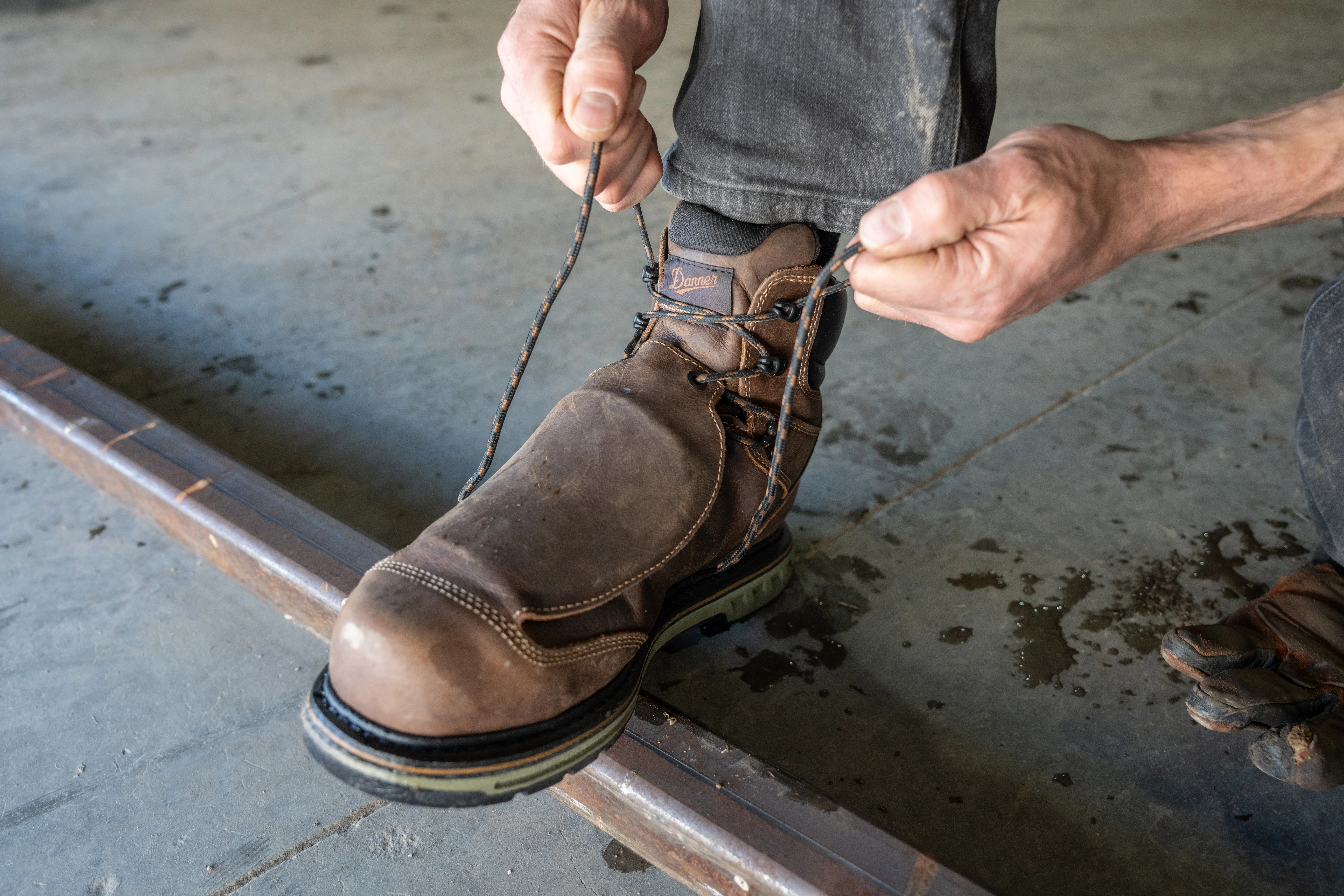



Protection is what elevates a boot from a supportive hiker to an industry heavy-hitter. Standards provide confidence in the boot’s ability to perform under specific stressors.
If you poke around work boots enough, you’ll likely come across safety ratings set by the American Society for Testing and Materials (ASTM). These are international standards that identify the minimal requirements for protective footwear on the job site. They rate everything from viral penetration to puncture resistance to compression ratings.
ASTM-F2413 standards rate boots specifically for compression, impact, metatarsal, conductive properties, electrical hazards, static dissipation, and puncture. Here are some typical ASTM abbreviations:
- I for Impact
- C for Compression
- Mt for Metatarsal
- Cd for Conductive
- EH for Electrical Hazard
- SD for Static Dissipating
- PR for Puncture Resistant
- CS Chain Saw cut resistance
- DI for Dielectric insulation — insulation from circuits or conductors
Each is followed by a number. To find how your prospective boot rates, the ASTM standards are outlined in four lines:
- Line 1: Compliance and year
- Line 2: Gender/impact/compression/metatarsal resistance
- Line 3-4: Specific hazards the boot protects against
So if we interpret the Timberland Boondock, we get the following:
- ASTM F2413-11: Complies with the performance requirement of F2413, issued in 2011
- M/I/75C/75: A men’s boot that complies with the impact and compression requirements of a 50-pound weight dropped from 18 inches, delivering 75 foot-pounds of force on the toe, and can endure 2,500 pounds of rolling force over the toe
- EH: Outsole is made from non-conductive materials that are shock-resistant
Buying Your Work Boots
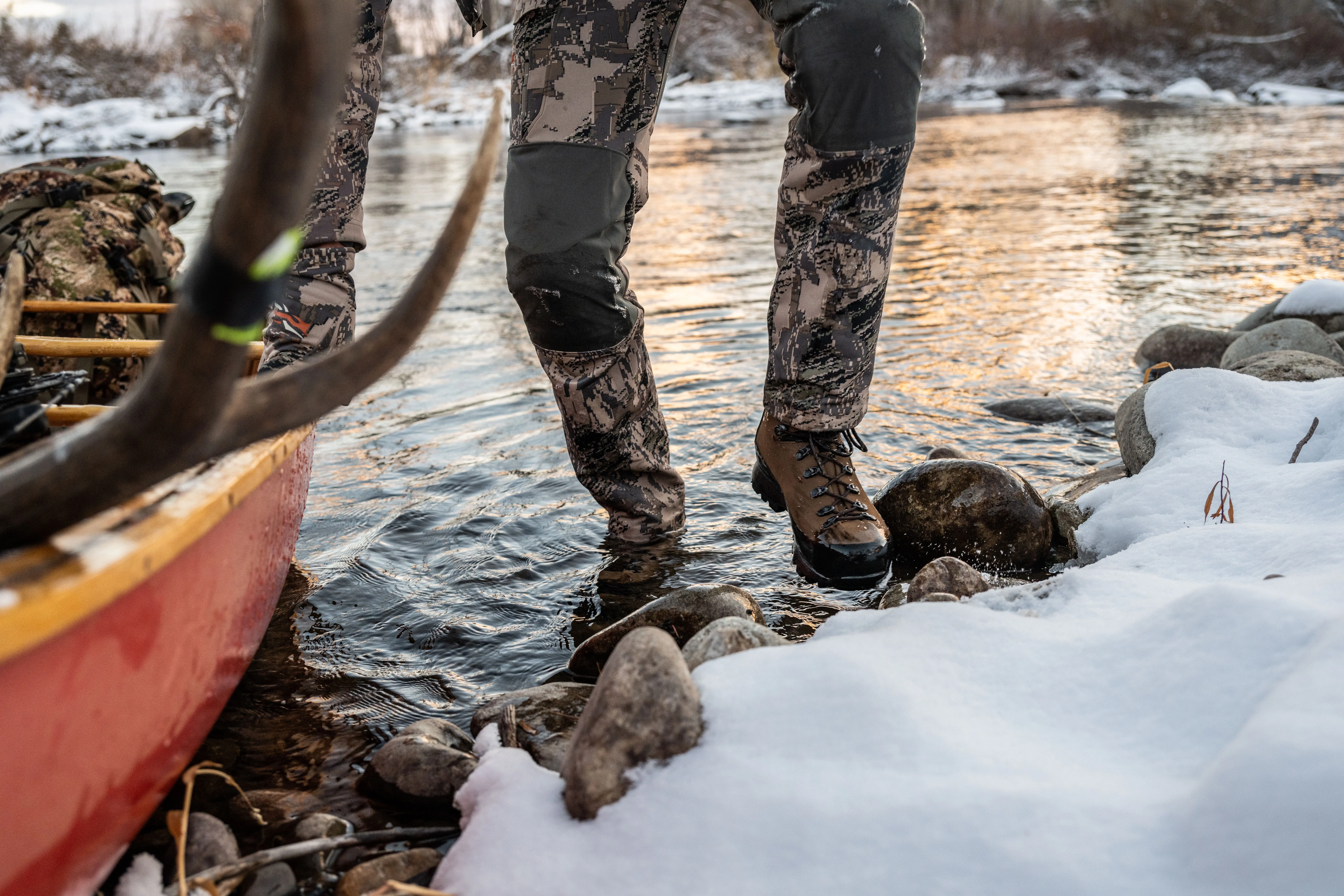



Which boot is best for you? If you’re puttering around the house on weekends, choose a comfortable boot with appropriate protection for your daily tasks.
Unless you’re Clark Griswold, you probably don’t need a heavy-duty, steel-toe boot to hang Christmas lights. You’d be better served with a comfortable, supportive boot with traction like the Danner Vicious. If you want something more stylish that pairs well with suites and shop work, look at the American-made Red Wing’s Iron Ranger. However, if you’re splitting wood or mowing the lawn, it’s not a bad idea to consider a safety toe for protection.
Many jobs will explicitly share which footwear meets required ASTM standards before you can step foot on the site. Neglecting to follow them can incur large fines from OSHA. Getting injured while deciding not to wear protective boots on the job can affect your workmen’s comp and insurance. If you’re unsure, ask your boss what standards your boots need to comply with.
You can buy any of these boots online. And some manufacturers, like White’s, will only build a boot off of your mailed measurements. But for most boots, it’s best to try them on at a local shop. A boot’s last can be different than your street shoe. A shop can measure your feet and ensure you’re stepping into a proper-fitting boot.
Try boots on at the end of the day, preferably after work. Your feet swell over a day’s work, and trying on shoes after your shift will provide a better gauge of a proper fit.
When you try on ski boots, you bring ski socks. The same goes for work boots. Bring a pair of socks you intend to wear with the boots. Better yet, buy yourself a new pair of socks; they wear out quicker than you think. Plus, nobody wants to try on shoes with socks pulled from the shop’s community bin.
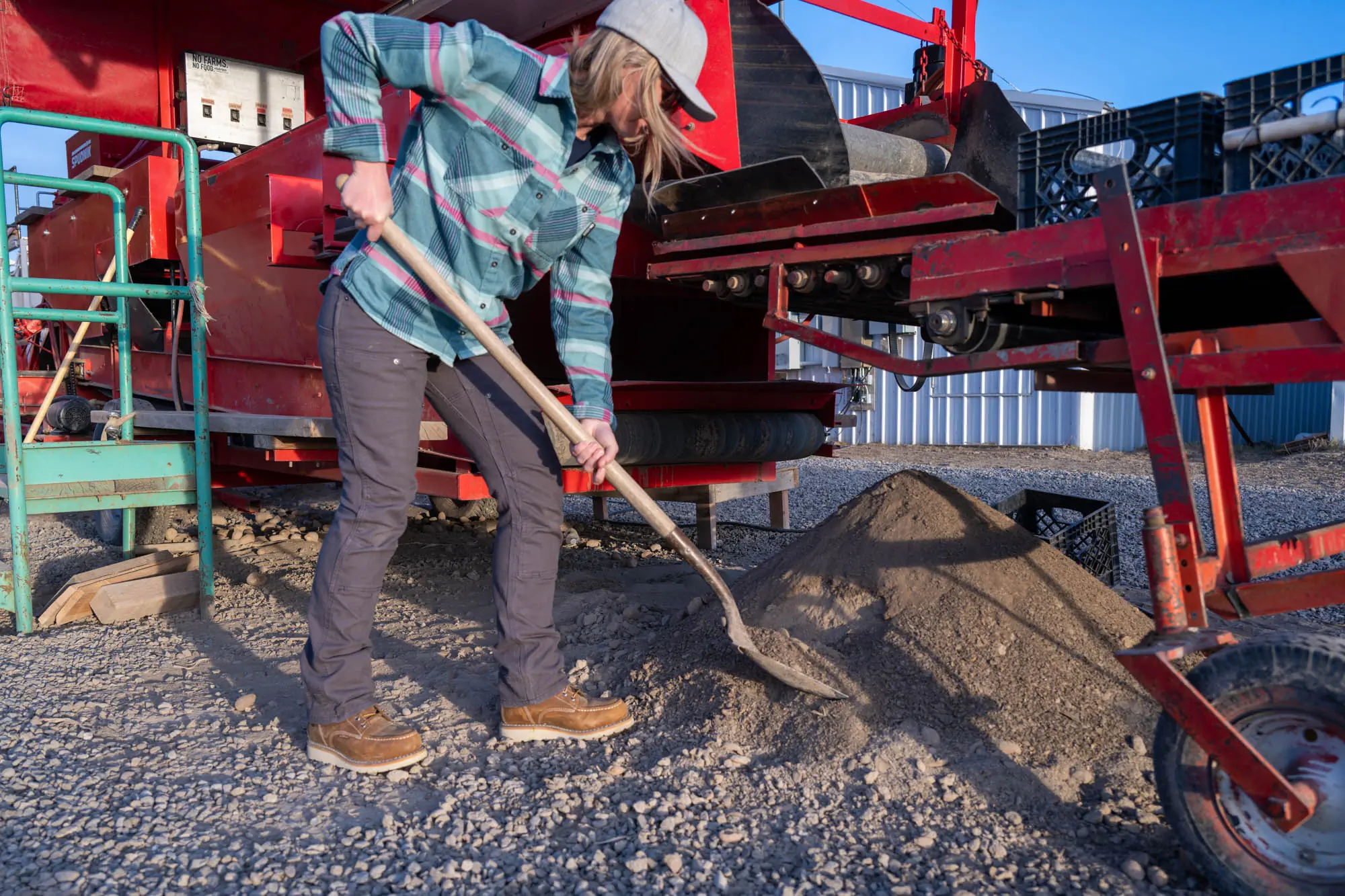



Take care of your boots. Invest in a good horsehair brush to regularly dust off dirt and grime. Clean your boots with warm water. Leather is like your skin and needs moisturizing. Condition your leather boots after every wash.
Your boots are tools, so periodically check them for wear and tear. Treat the safety toe like a helmet. If a composite toe has taken a hit, it’s probably best to retire the boots. If the boot has a Goodyear welt, uneven wear on the sole’s heel, or any splitting from the boot, it’s a good indication it’s time to resole.
Hiking in Work Boots
Some of the boots in our selection are versatile enough to hike in, and some of us do. However, if you’re looking to get into the woods after you’ve clocked out, check out any of our other guides for further inspiration, like our list of the best hiking boots, best hiking shoes, and best hunting boots.
Price & Value
Work boots are your first line of defense in a work setting – whether it’s in a factory, on the job site, or in your backyard. They face the most abuse from the environment they are being used in as well as weather conditions in general. For these reasons, you want to make sure you invest in the right boot for you that will stand the test of time.
Budget
There’s always a negative connotation surrounding budget work boots. The fact of the matter is that there are quality work boots in the budget category, but they may not meet all of the standards that you need for your job. However, if you’re looking for a good boot for the backyard or workshop, you can save yourself some money.
At $115, the Caterpillar Second Shift work boots are a great steel-toe boot for the price. They’re made from full-grain leather, feature an EH-rated steel toe, and have the added benefit of a resistant outsole. For those of you who don’t need a steel toe and are looking to save a few bucks, the Second Shift is also available in a soft-toe model.
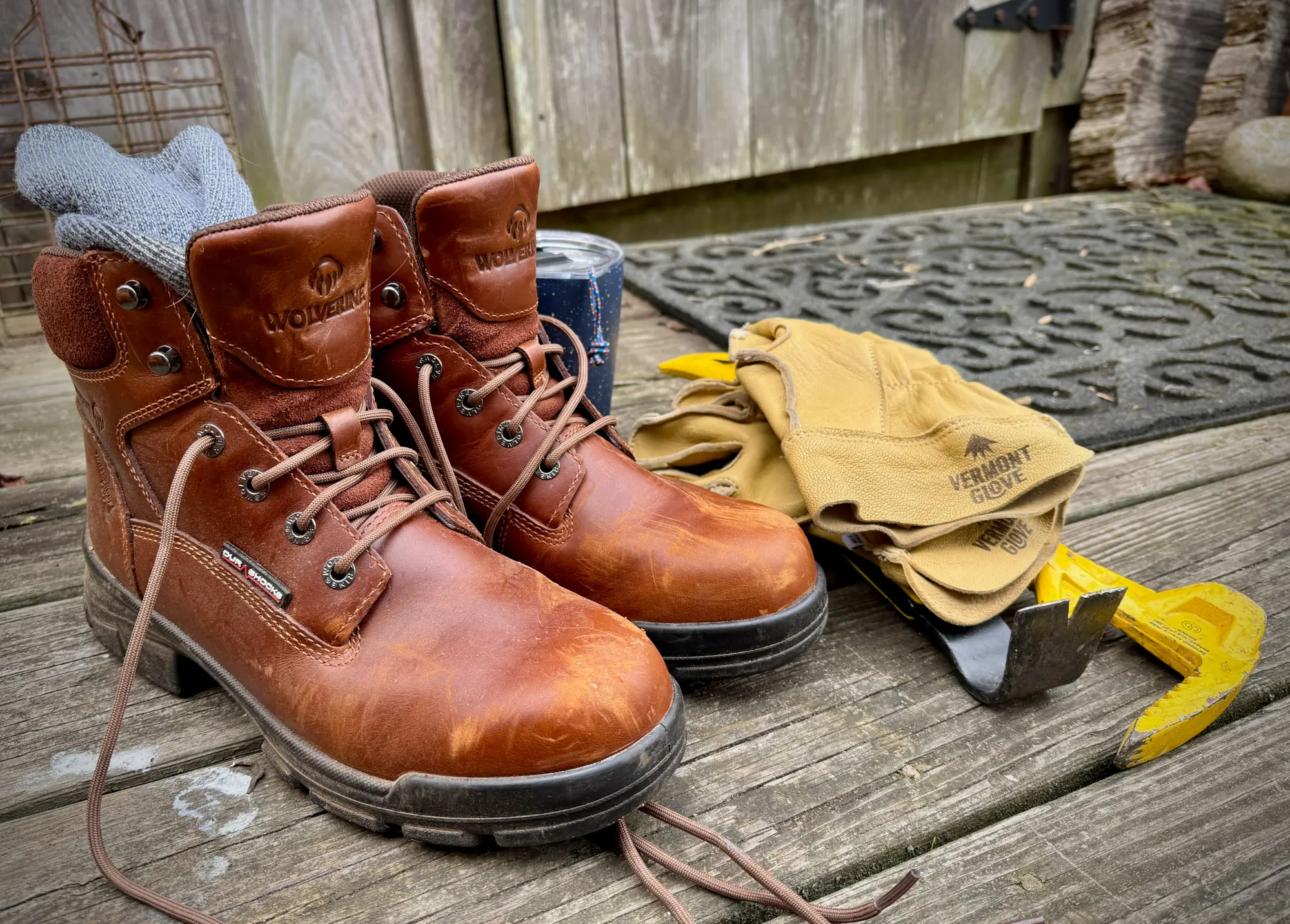



Mid-tier
When considering a mid-tier level work boot, plan on paying between $150-200. These are boots that are generally made from longer-lasting materials and typically meet all of the required ASTM standards a work boot needs to be used in a hard-working environment.
On this list, our top pick, the Timberland PRO Boondock 6-inch Comp Toe ($200), would be categorized as “mid-tier”. Contributor Nick LeFort swears by these boots and has gotten upwards of two years of hard use out of a pair. This level of comfort, quality, and reliability has made him buy two more pairs over the years.
Premium
In the world of work boots, premium boots meet or exceed everything that you would expect from a mid-tier boot but may have certain features that elevate their price and categorization. One example would be the Thorogood American Heritage 6-inch Moc Toe. These boots are American-made, which impacts their cost. Another example of a premium work boot would be one designed for harsh environments. The Muck Arctic Pro Steel Toe Boot was designed to keep you comfortable, dry, warm, and supported for hours. At $230, this boot is actually a bargain, considering what it has to offer.
Frequently Asked Questions




We found that the BOGS Bedrock II 6″ WP is the most comfortable work boot on the market for most foot shapes. However, if possible, go to a store after your shift is done and try on different boots to see what feels more comfortable to you.
The best work boot you can buy will be the one that matches the safety ratings you need and one that you can wear repeatedly for hours on end. Everyone’s specifics will differ, but the Timberland PRO Boondock 6-inch Comp Toe and the Danner Steel Yard were two of the best overall boots we tested.
A MOC toe is a style of boot that has a seam running around the top edge of the toe. The Thorogood American Heritage 6-inch moc toe is a prime example of this.
Work boots that hurt your feet generally do not provide the correct support, or they do not fit correctly. Finding the correct boots for your feet is important, and generally, the more money you spend on a work boot, the more comfort and support you will get. Follow our buyer’s guide above to help make a comfortable choice.
Everyone’s feet are different, so finding the correct boot for your feet is important. Here are some tips to lead you to the right boot when you go out boot shopping. If you need more info on how to choose the right boot, check out GearJunkie’s boot-buying tips.
- Decide what features you are looking for to help guide you to a specific style of boot. Some examples of boot features are as follows: waterproof, steel or safety toe, electrical shock-resistant, slip-on versus lace-up, boot height, etc.
- Test the boots for length and width. Not every company sizes its boots the same. Some are longer or shorter, and boot width can vary significantly, especially when it comes to safety/steel-toe boots. We have found discrepancies of up to a full boot size between different brands we tried, so you can’t always rely on the size that’s on the tag. Make sure to try them on before buying them, or if ordering online, make sure you can return them if the fit is incorrect.
- Make sure that the boots flex well and in the right location. Boots should flex at the ball of your foot, not at your arch. If the boot flexes too far back it will lead to foot fatigue due to lack of support. Looking for boots that say they have a “shank“ can help, as this adds support and only allows the boot to flex where it should flex.
- Make sure that the laces hold your foot in place. If you cannot get the boot to the correct tightness, it will allow your foot to move too much, causing blistering or irritation.
- Wear the same socks you wear on the job while trying on boots. Wool/synthetic blends will keep your feet more comfortable than cotton during a long workday.
Try on boots at the end of the workday. Your feet change shape throughout the day so trying on boots at the end of the day when your feet have swollen, widened, and flattened will allow for a much better fit that won’t have your feet hurting at the end of a long day.
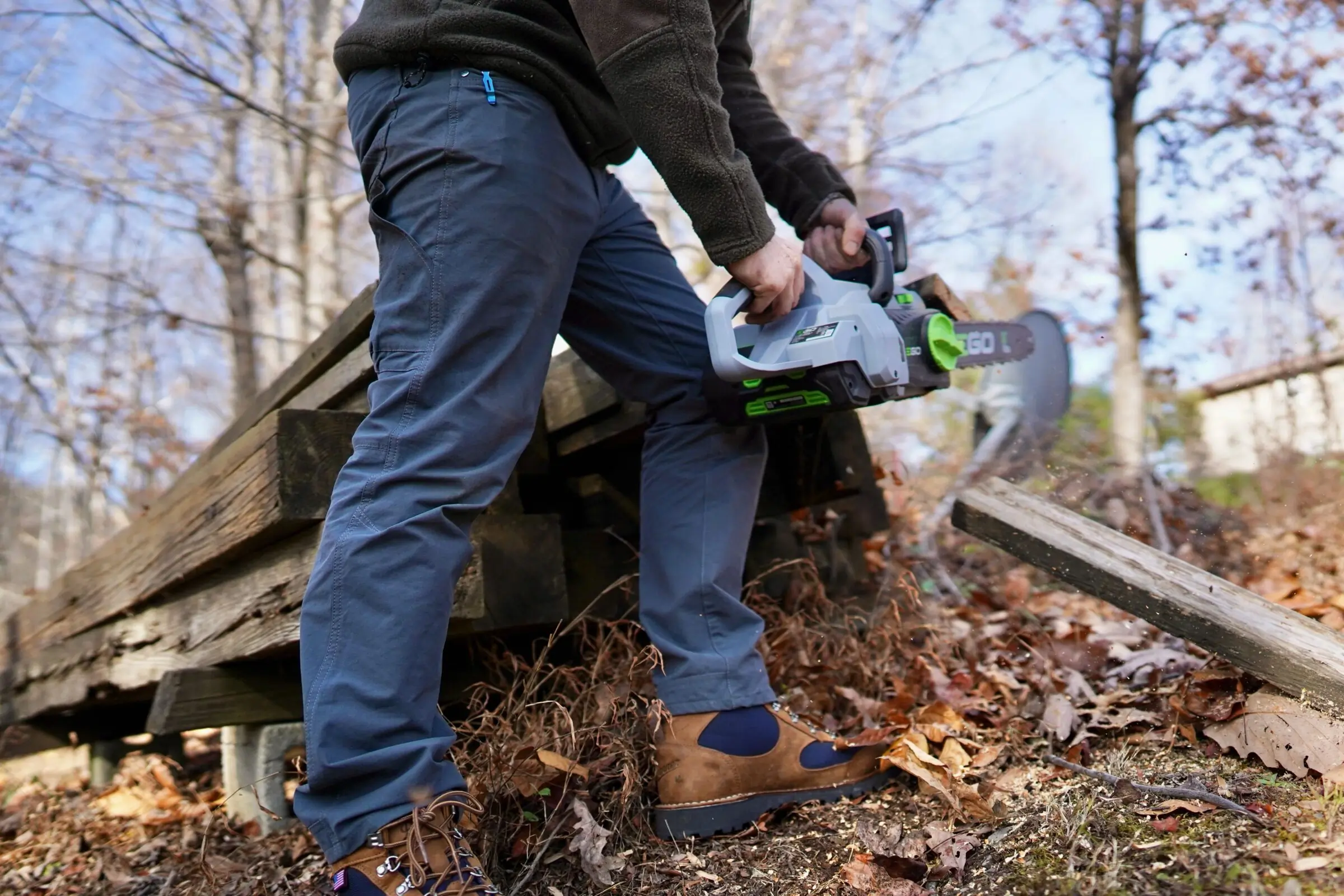

The Best Work Pants of 2025
Work pants provide functional utility for carpentry, construction, ranch work, or DIY home projects. These are the best work pants we have found in 2025.
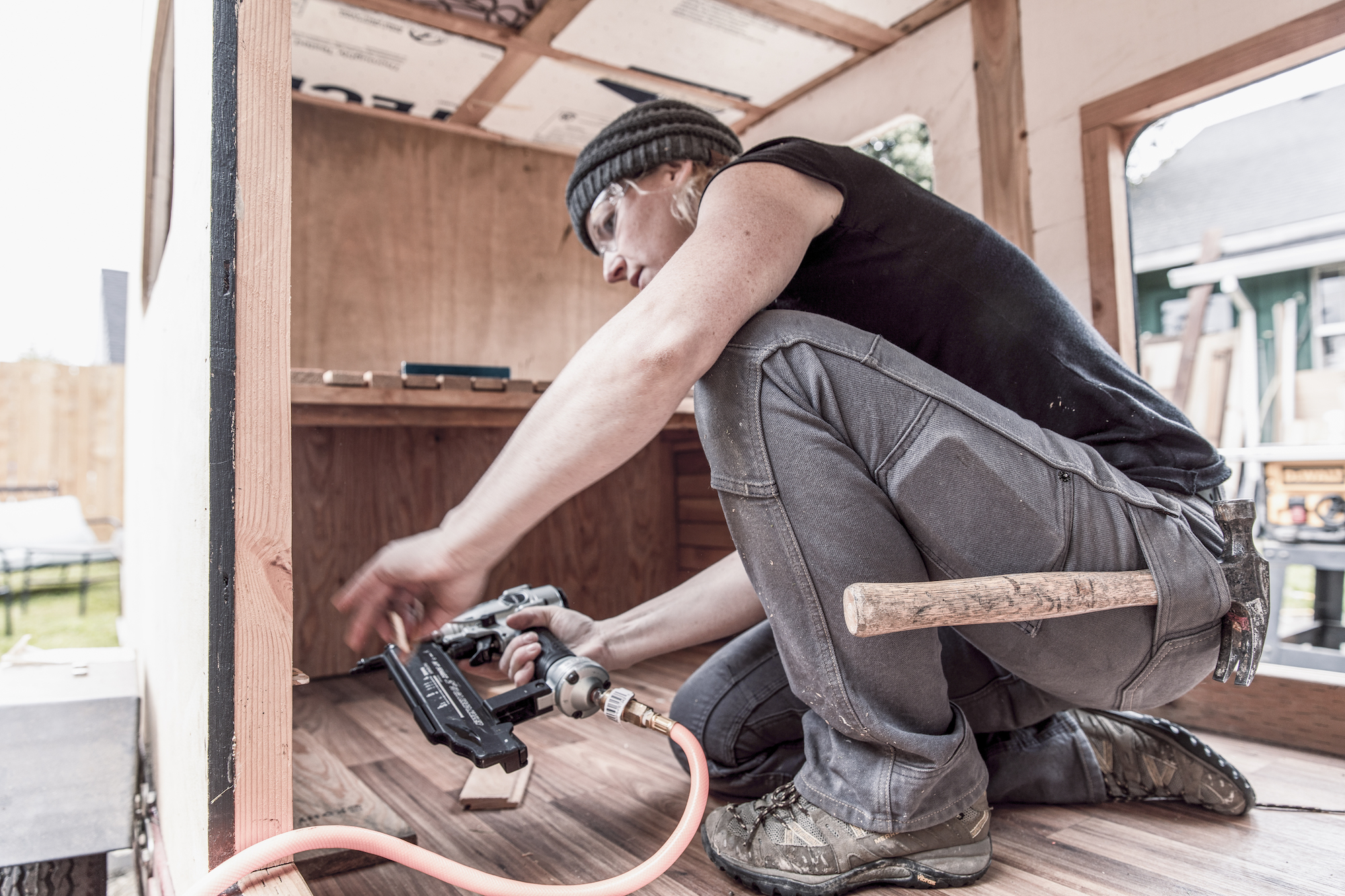

The Best Work Pants for Women
For women with tough and demanding gigs, here are the best work pants that hold up. We tested top picks from Carhartt, Dovetail, and more.

